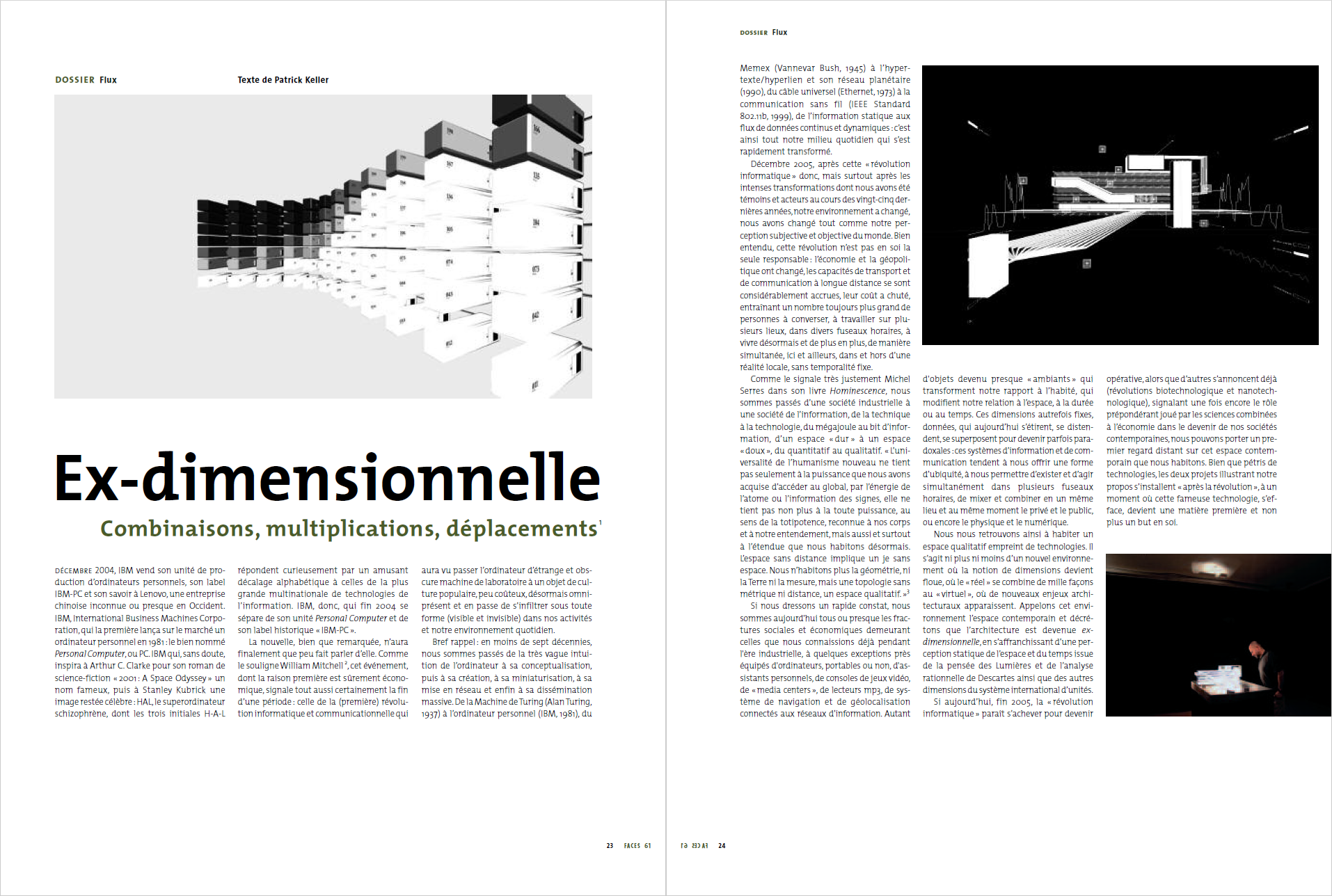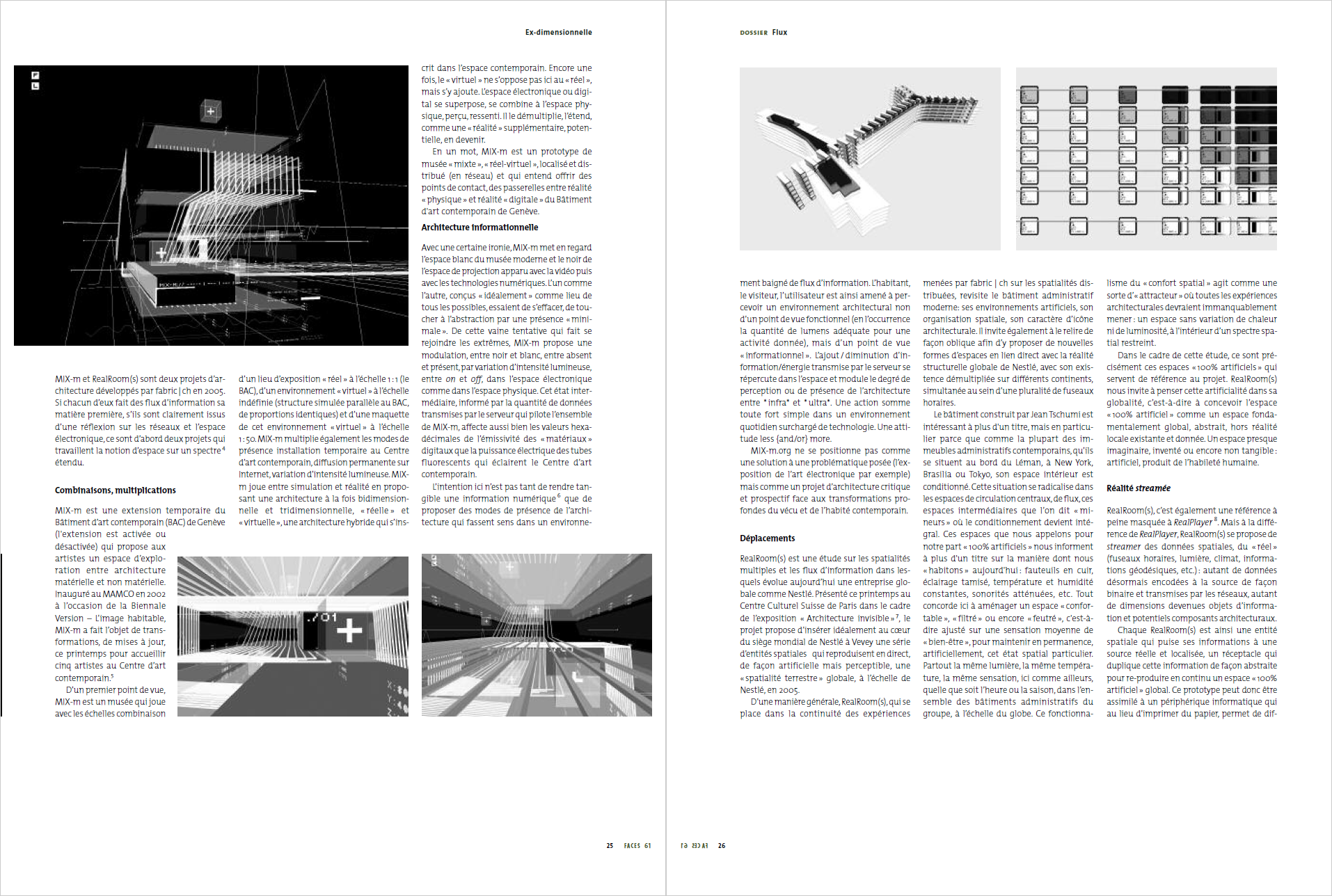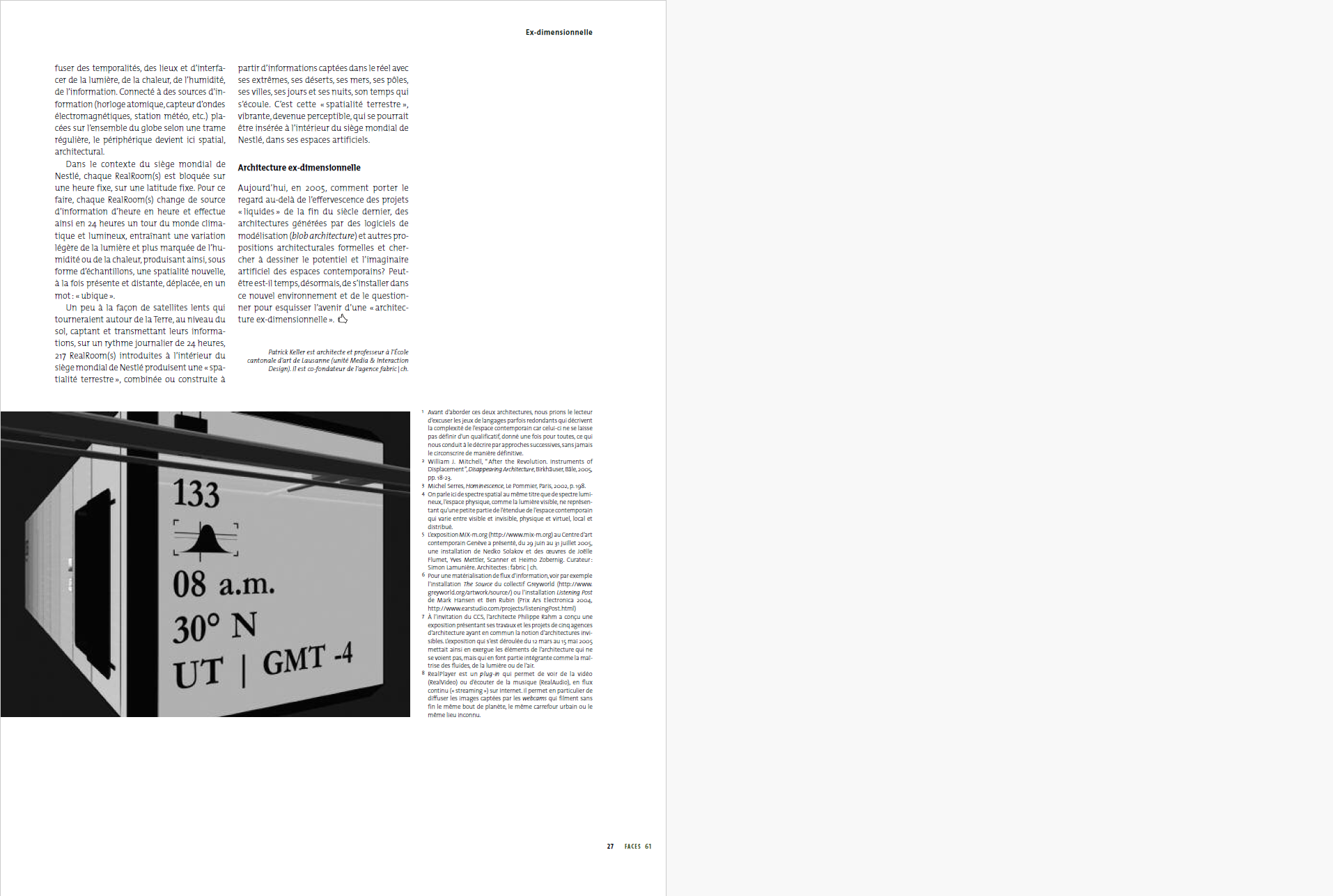Atomized (*) — A genealogy
Atomized/Retrofitted Functioning (2025)
Ongoing Process — Biennale Architettura 2025, Venice
About
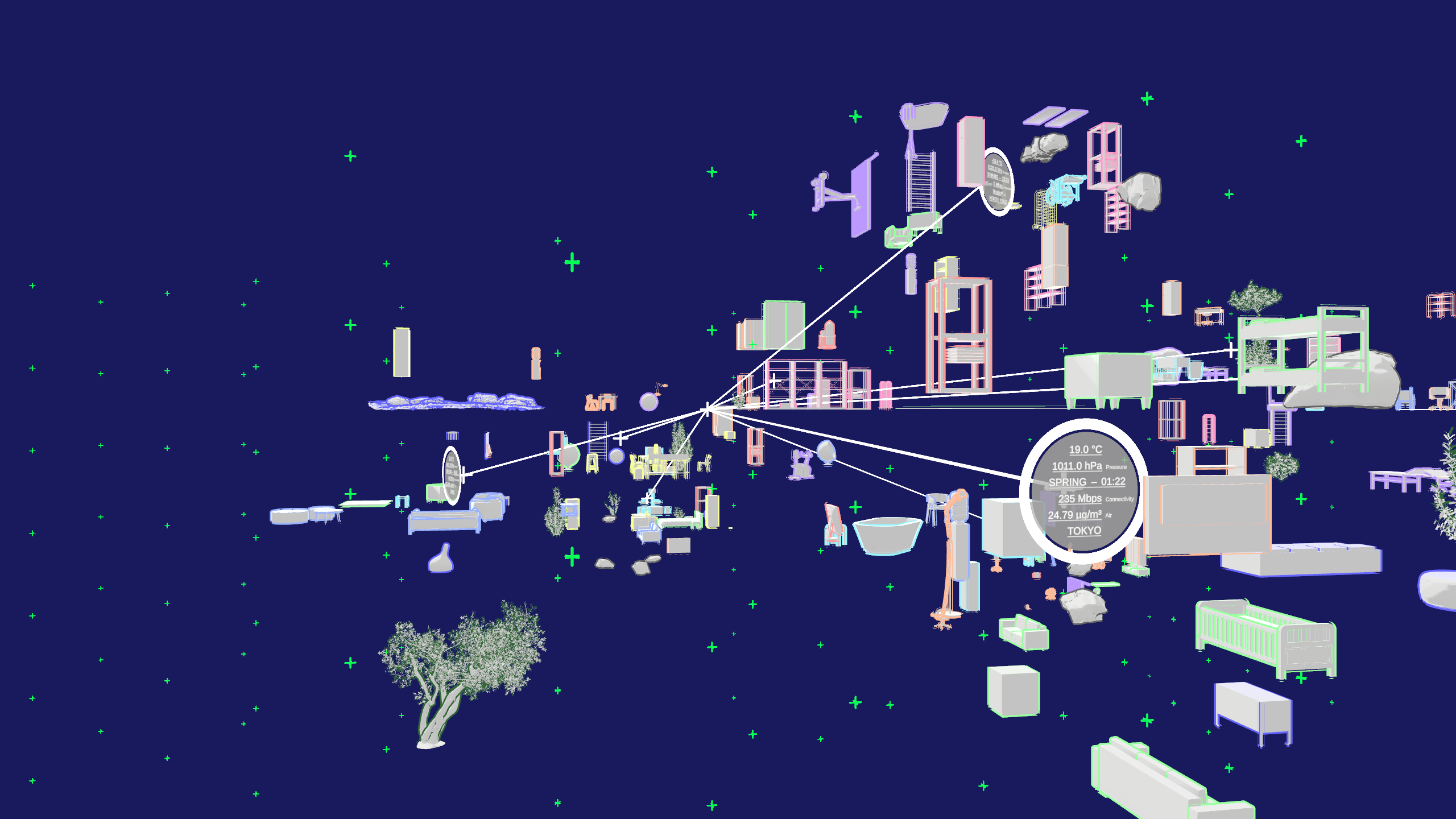
Atomized/Retrofitted Functioning is the latest iteration of Atomized (*) project, a series of architecture and art experimentations initiated by fabric | ch in 2018. This website brings together, in the form of a genealogy and archive, the various texts and developments that have contributed since 2006 to the foundation and evolution of the Atomized (*) project.
In a few words, Atomized (*) is an architectural study based on automated algorithmic principles, to which a machine learning layer can be added as required. It is a software piece that endlessly creates and saves new spatial configurations for a given situation, converges towards a “solution”, in real-time 3d and according to dynamic data and constraints.
Based on this program, the architectural process constantly seeks new functional associations related to the physical-digital / human-non human state of our contemporary environment. To do this, it uses “atoms” (or 3d architectural elements in a predefined and atomized granularity) that have been made available to the algorithms to carry out their combinatory constructions. The system digs and searches for unexpected and sustainable assemblages or reconfigurations of these elements, by adapting to dynamic environmental conditions.
fabric | ch, May 2025
Images
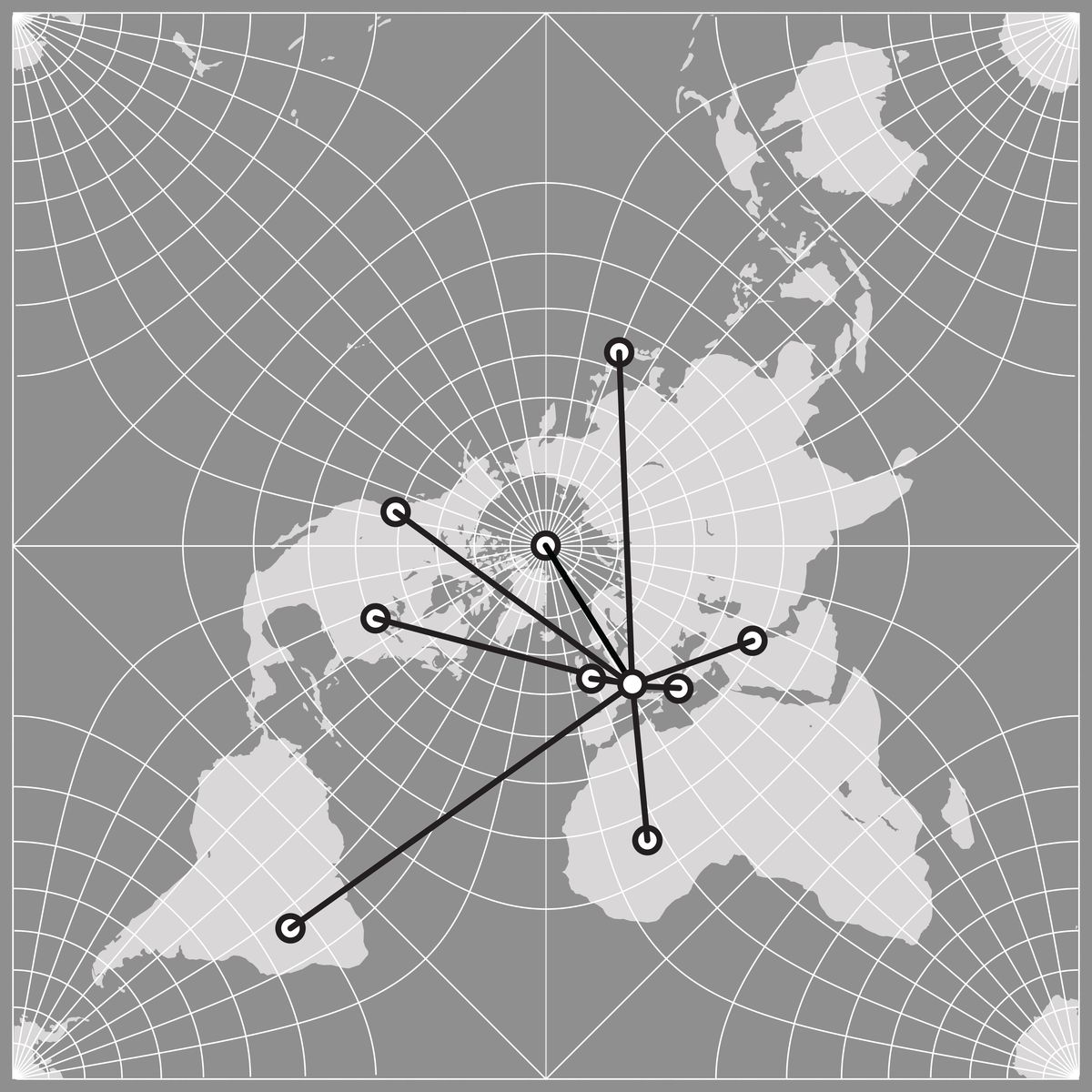
The “pulsar map” (Voyager reminiscent) of proposed planetary locations provides data for exploring the architectural potential of this abstract space. It is scaled and mapped on a volume measuring 108 x 108 x 39 meters, which lies between a small-scale landscape and a large structure with a program of hybrid and densifying nature. Data sources : Venice (IT), Uruk (IQ), Athens (GR), Manchester (EN), Timbuktu (ML), Brasilia (BR), Chicago (US), Tokyo (JP), Vancouver (CA).
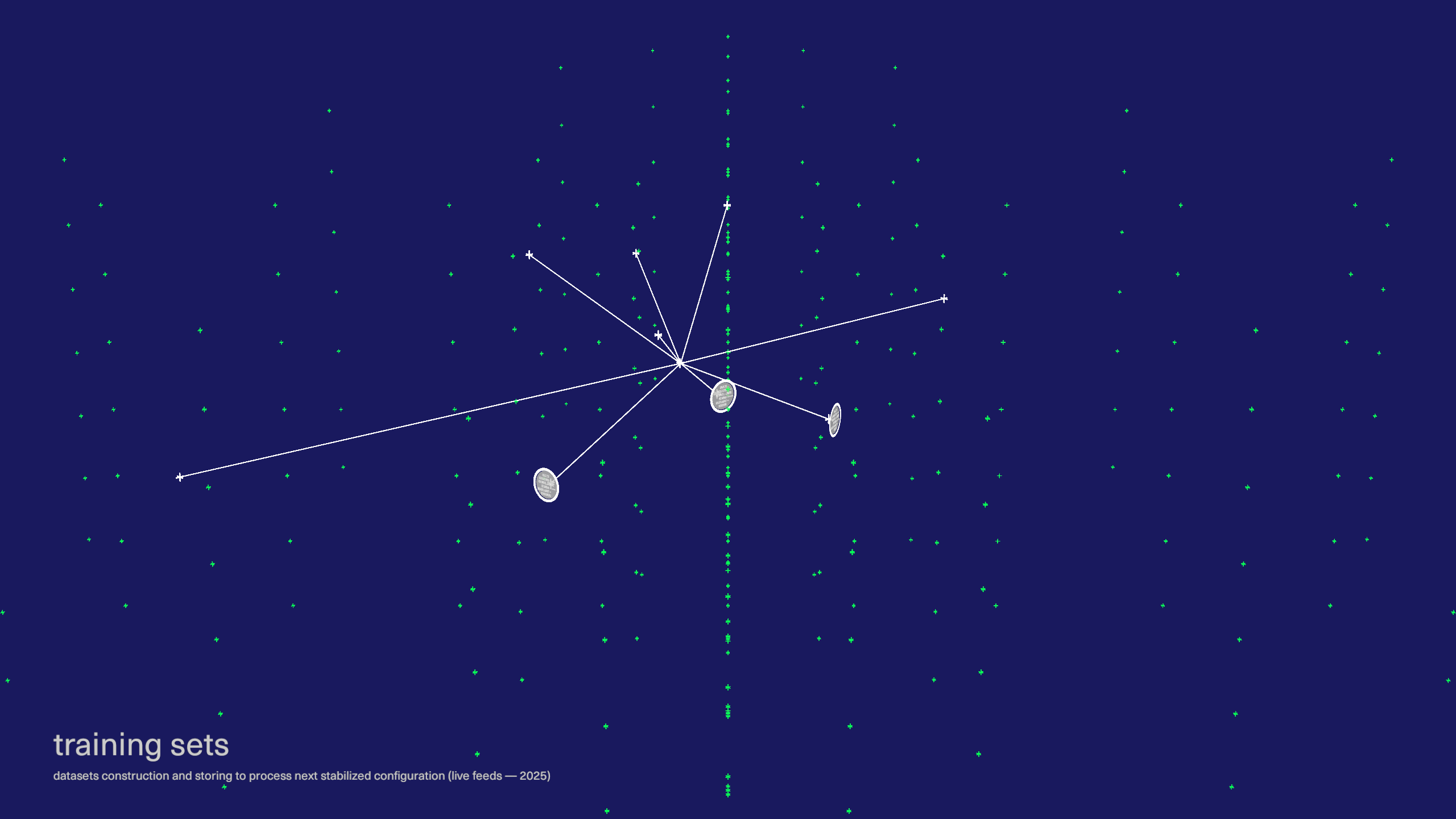
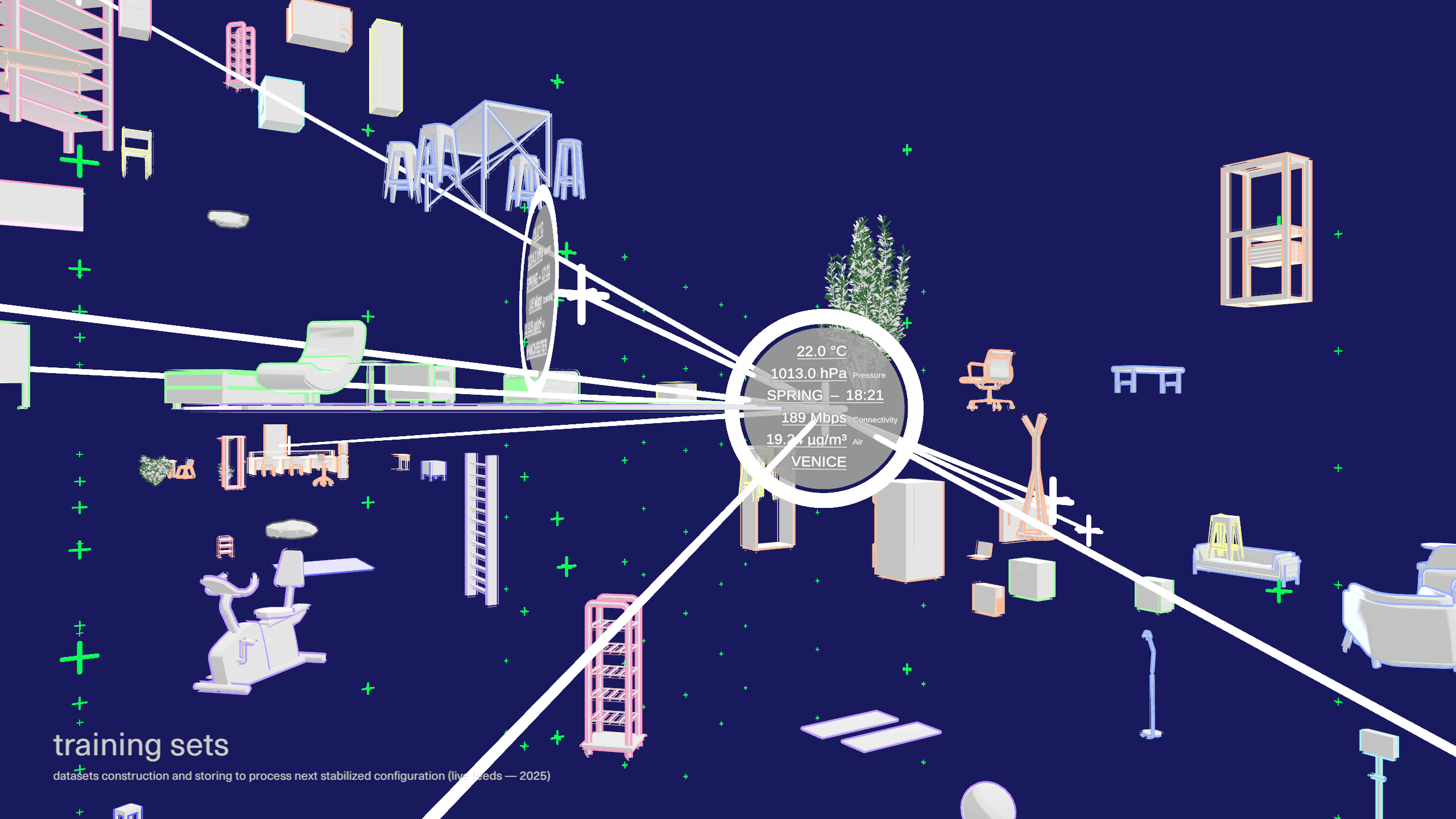
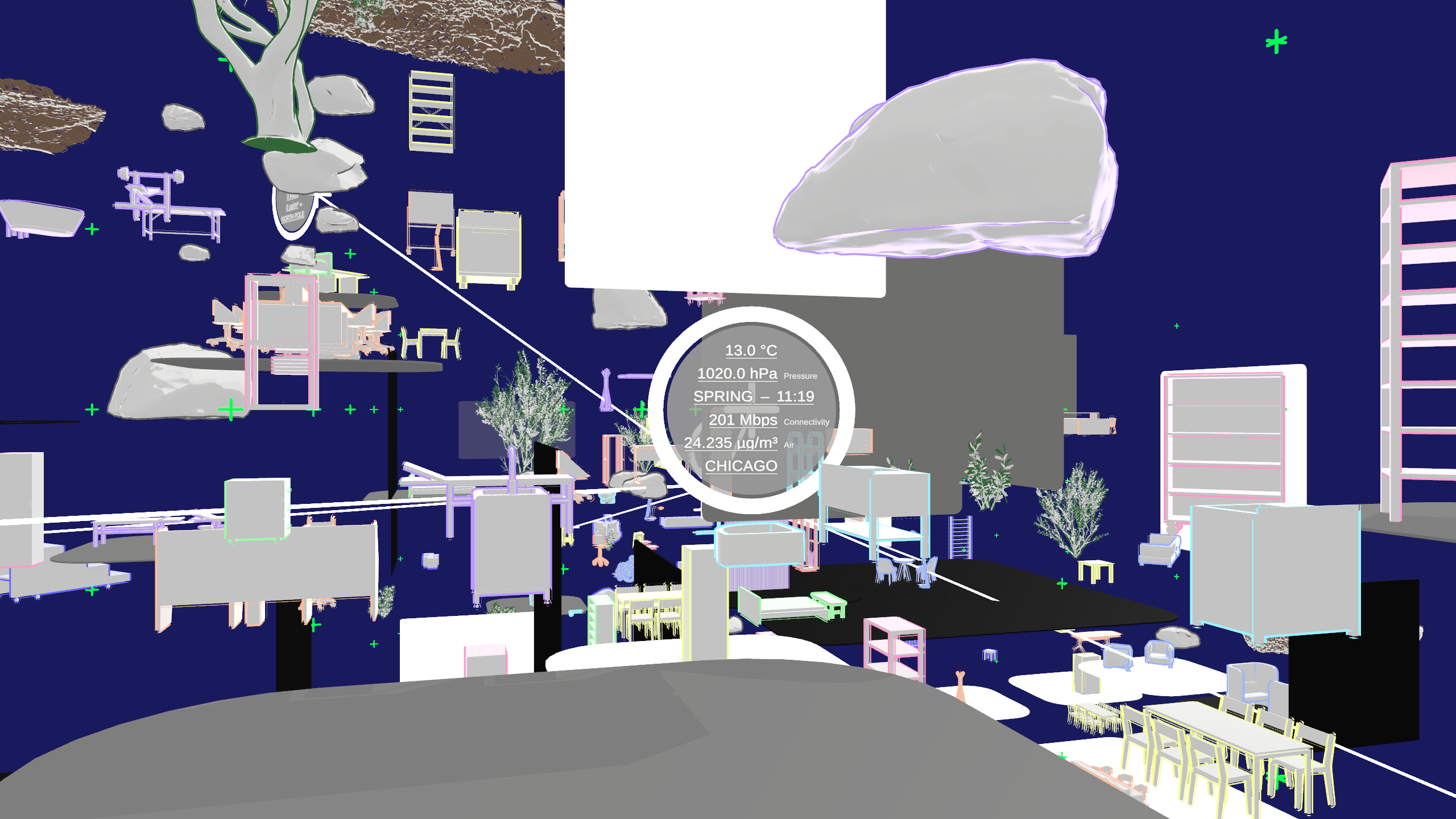
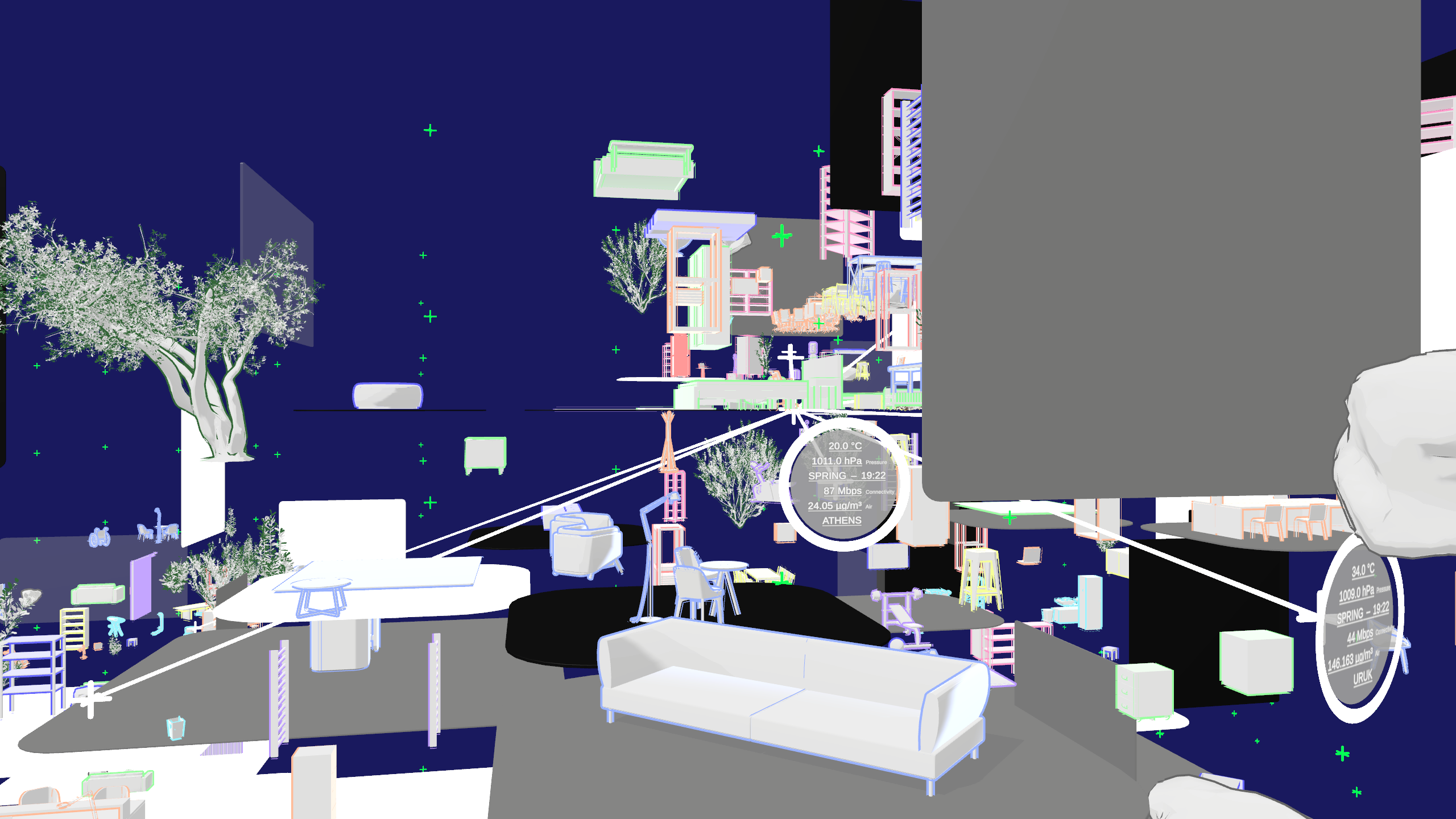
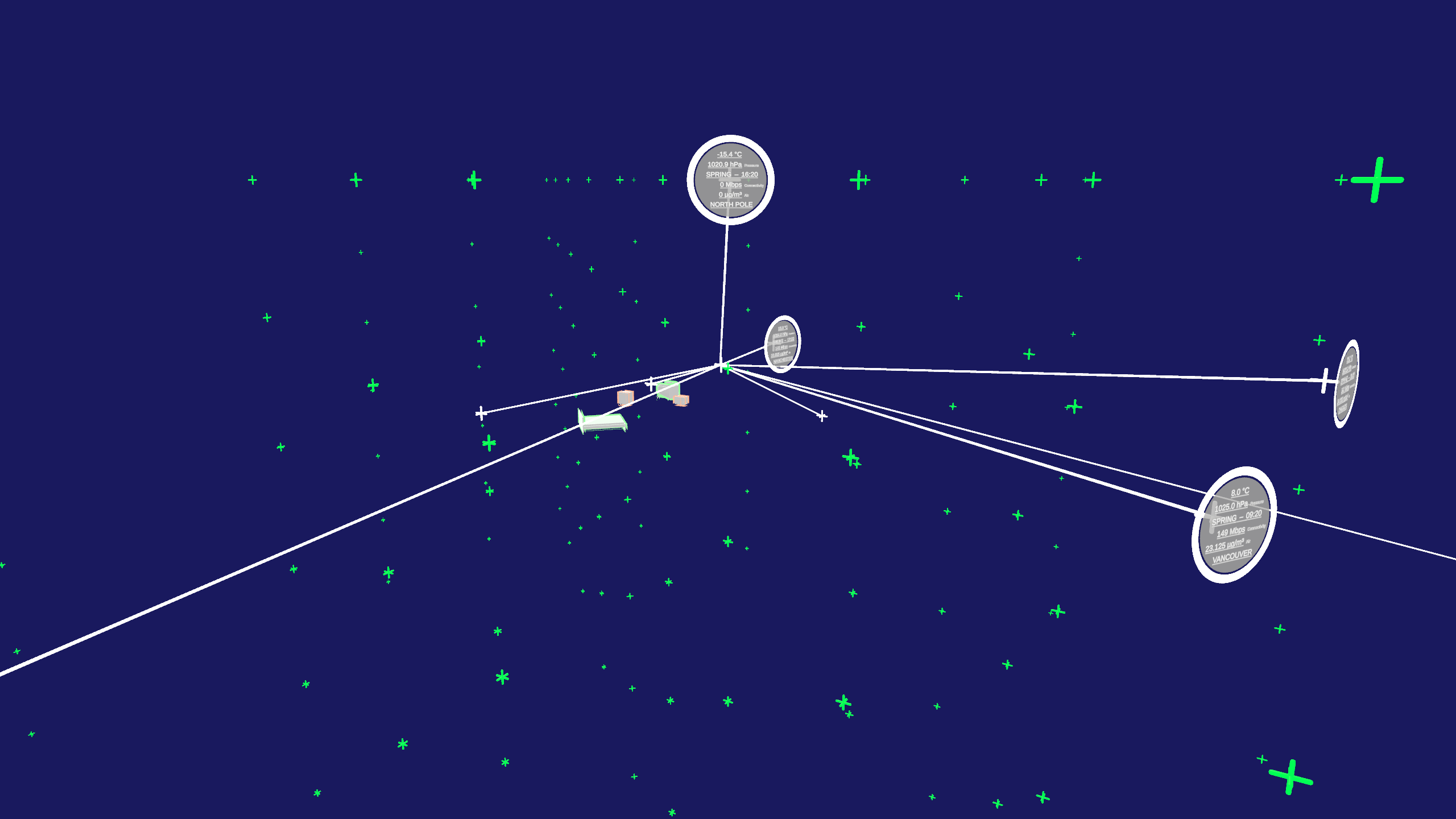
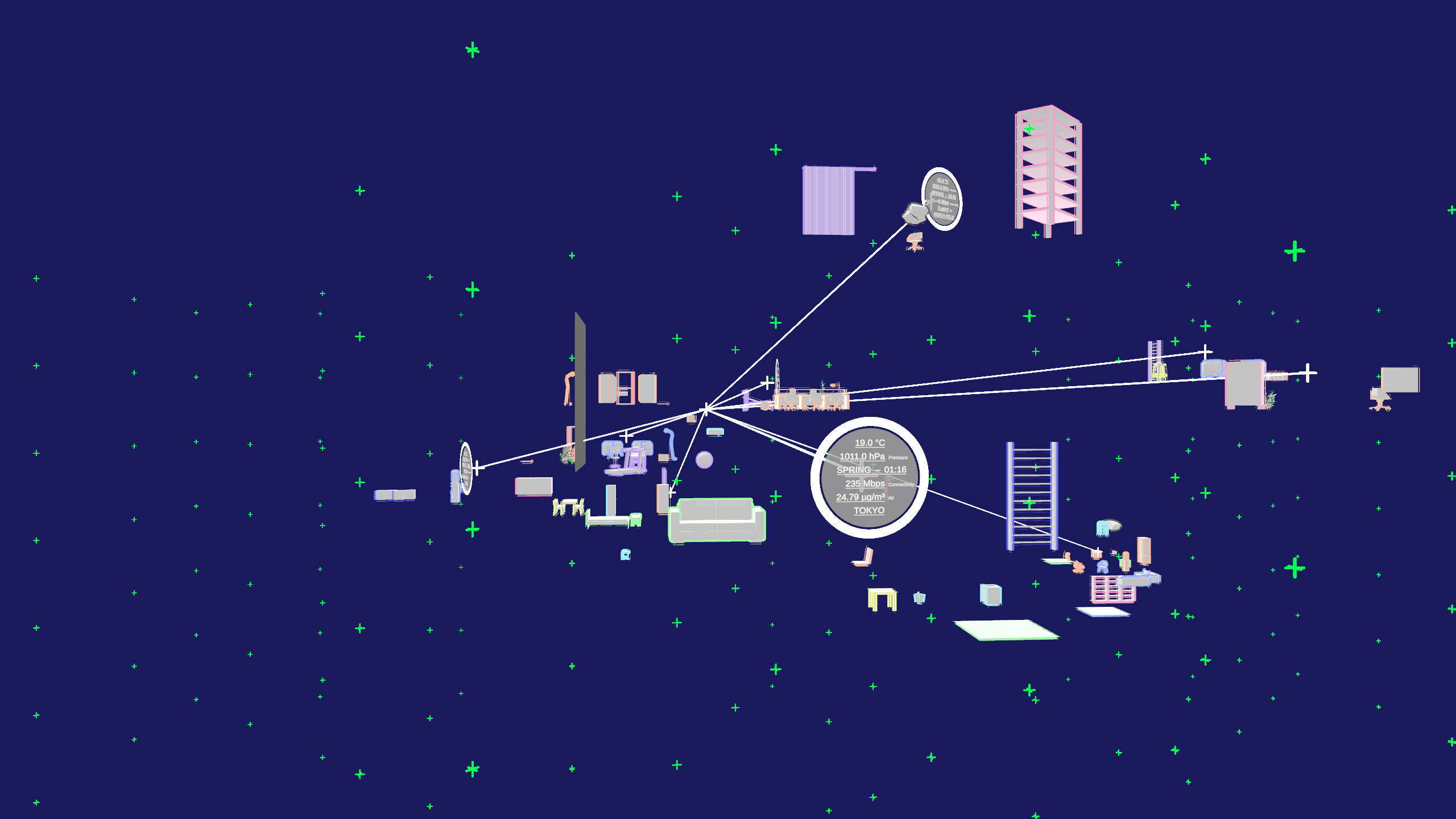
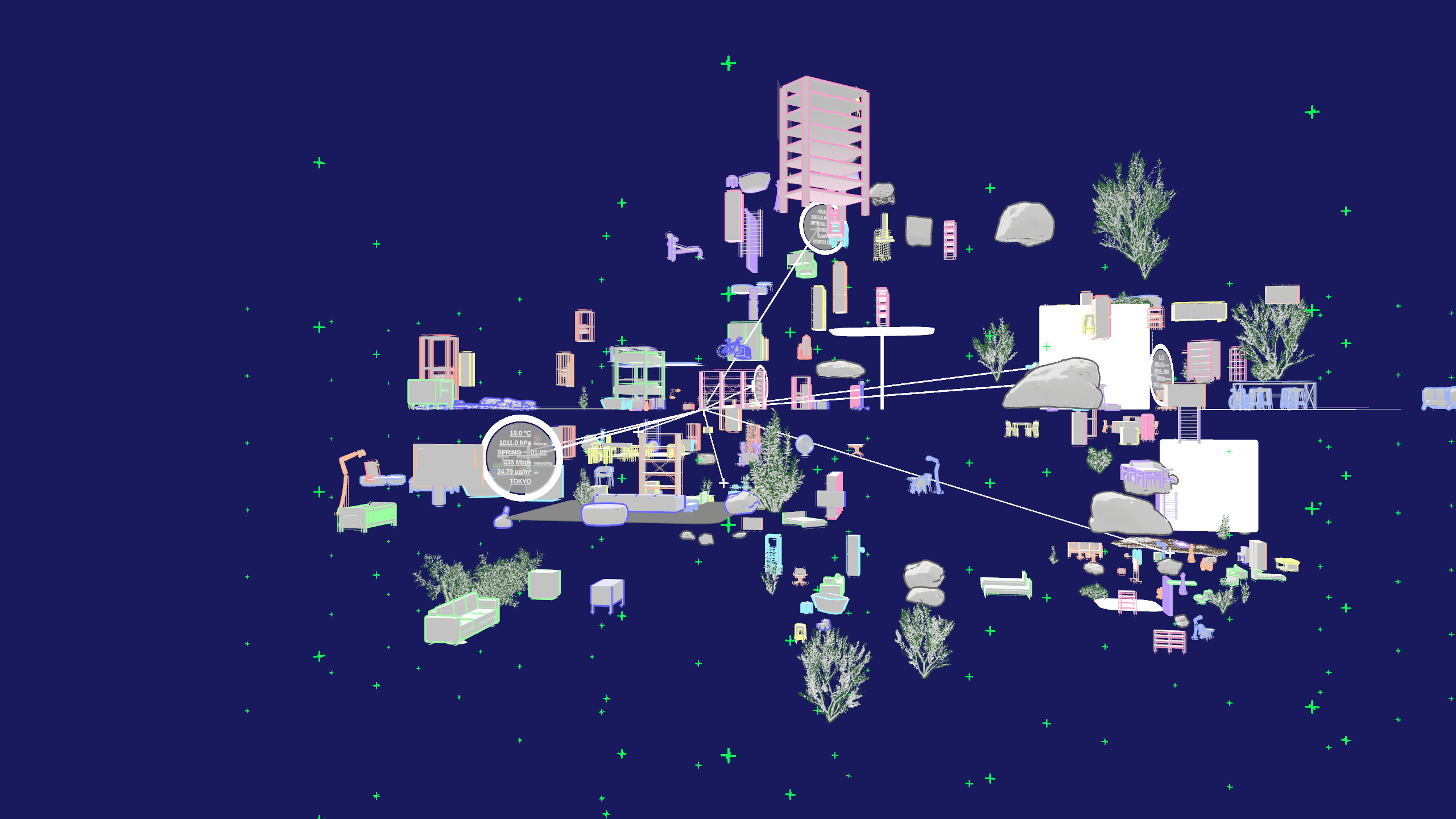
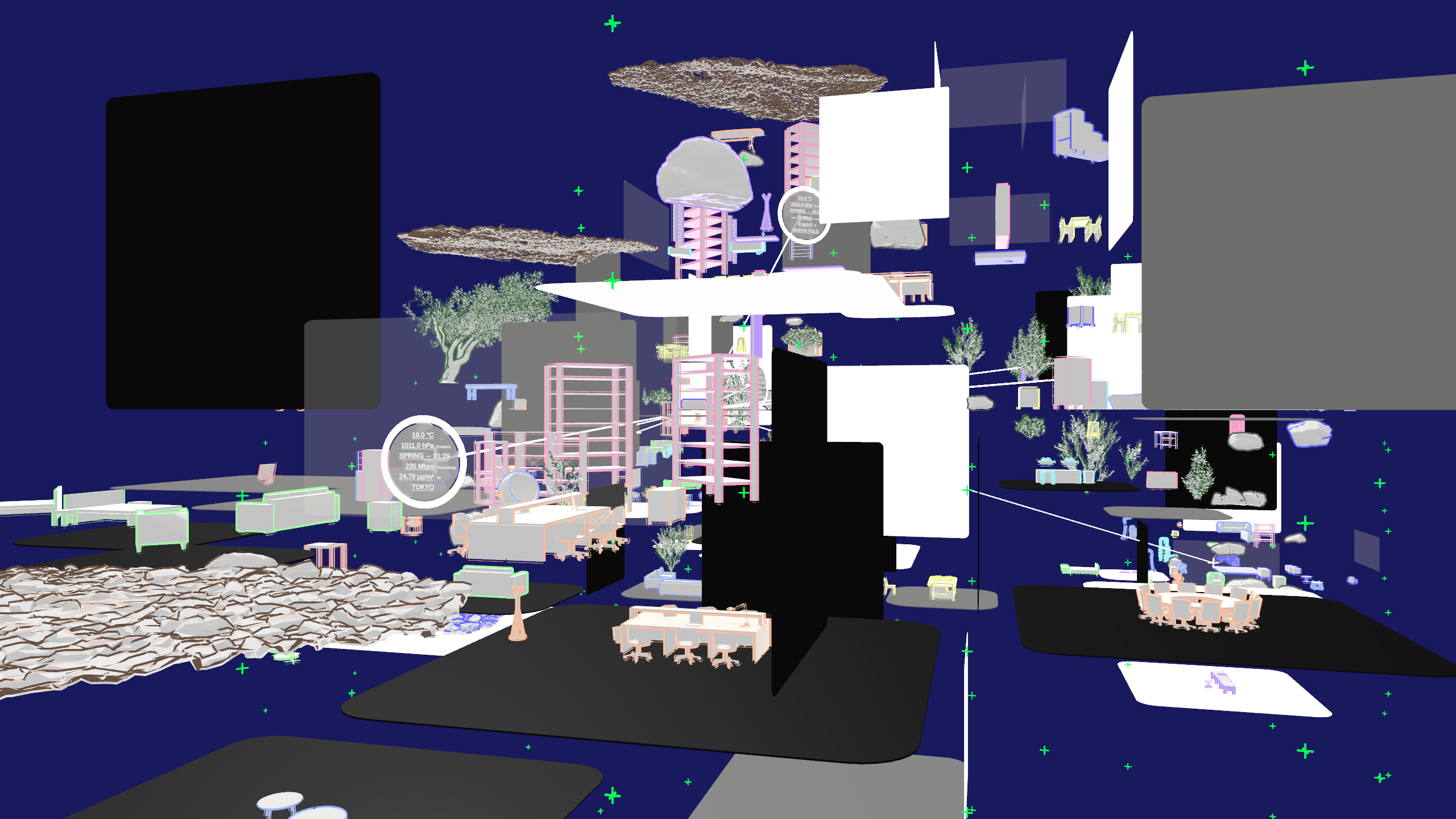
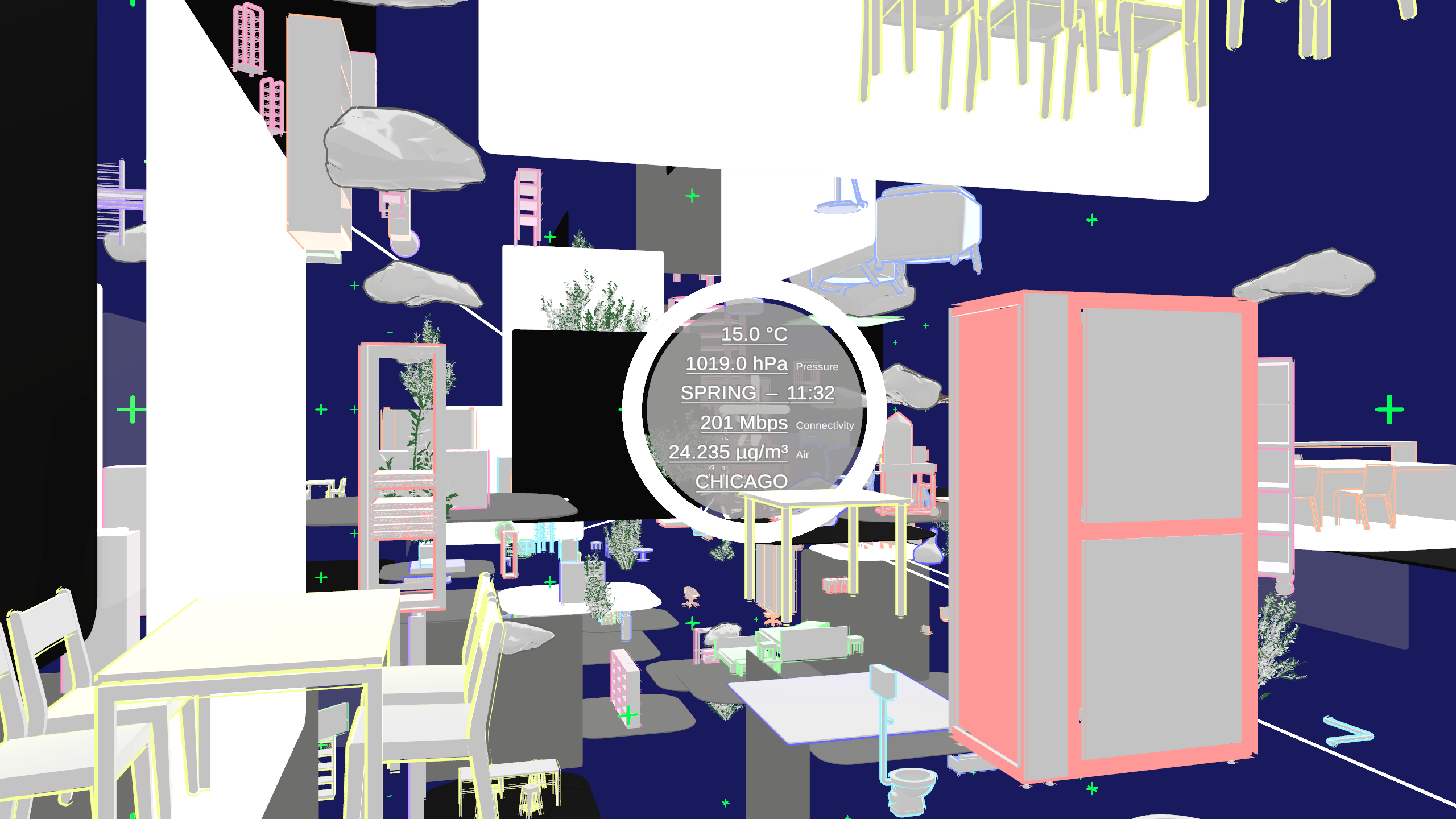
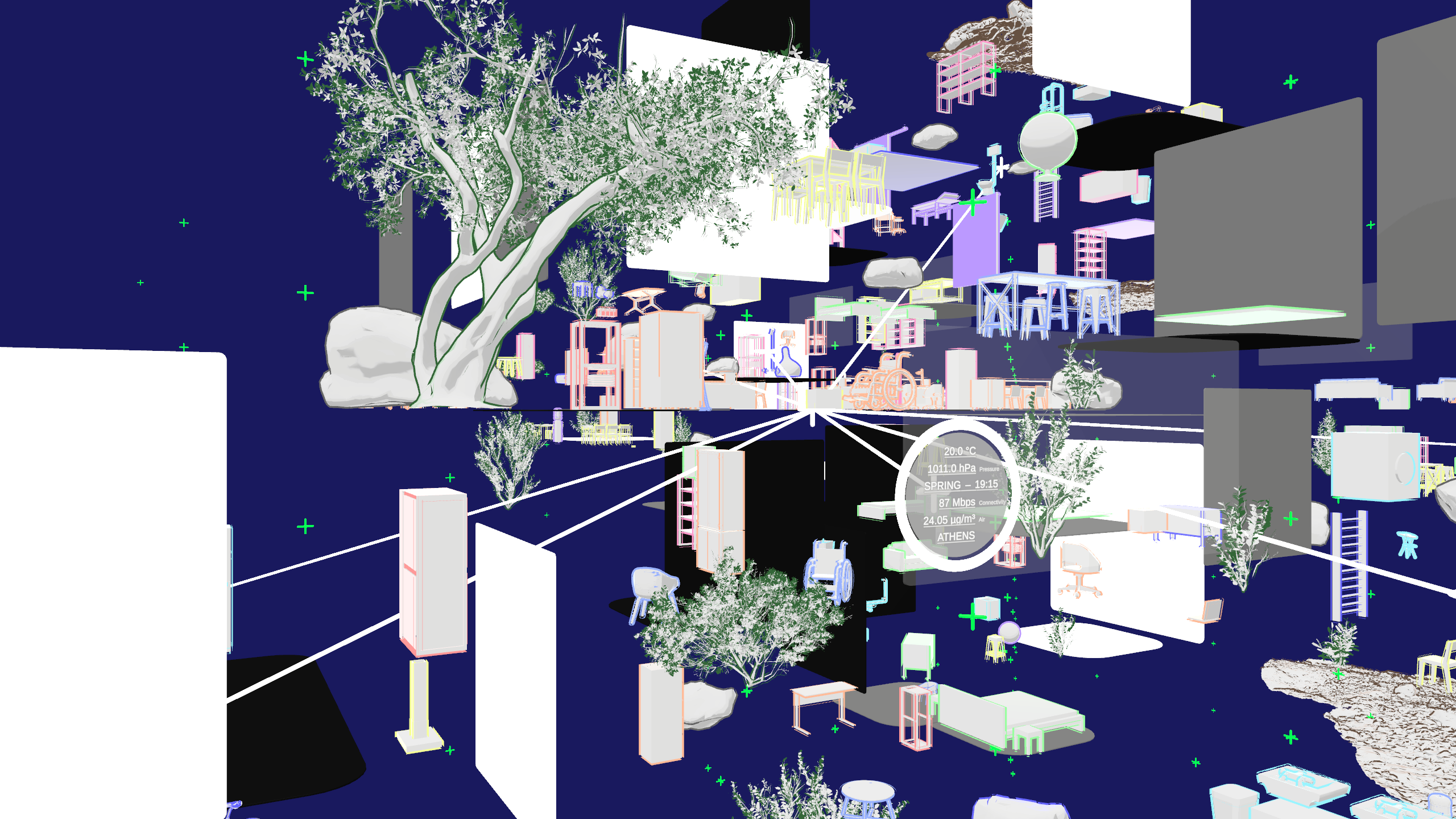
Video
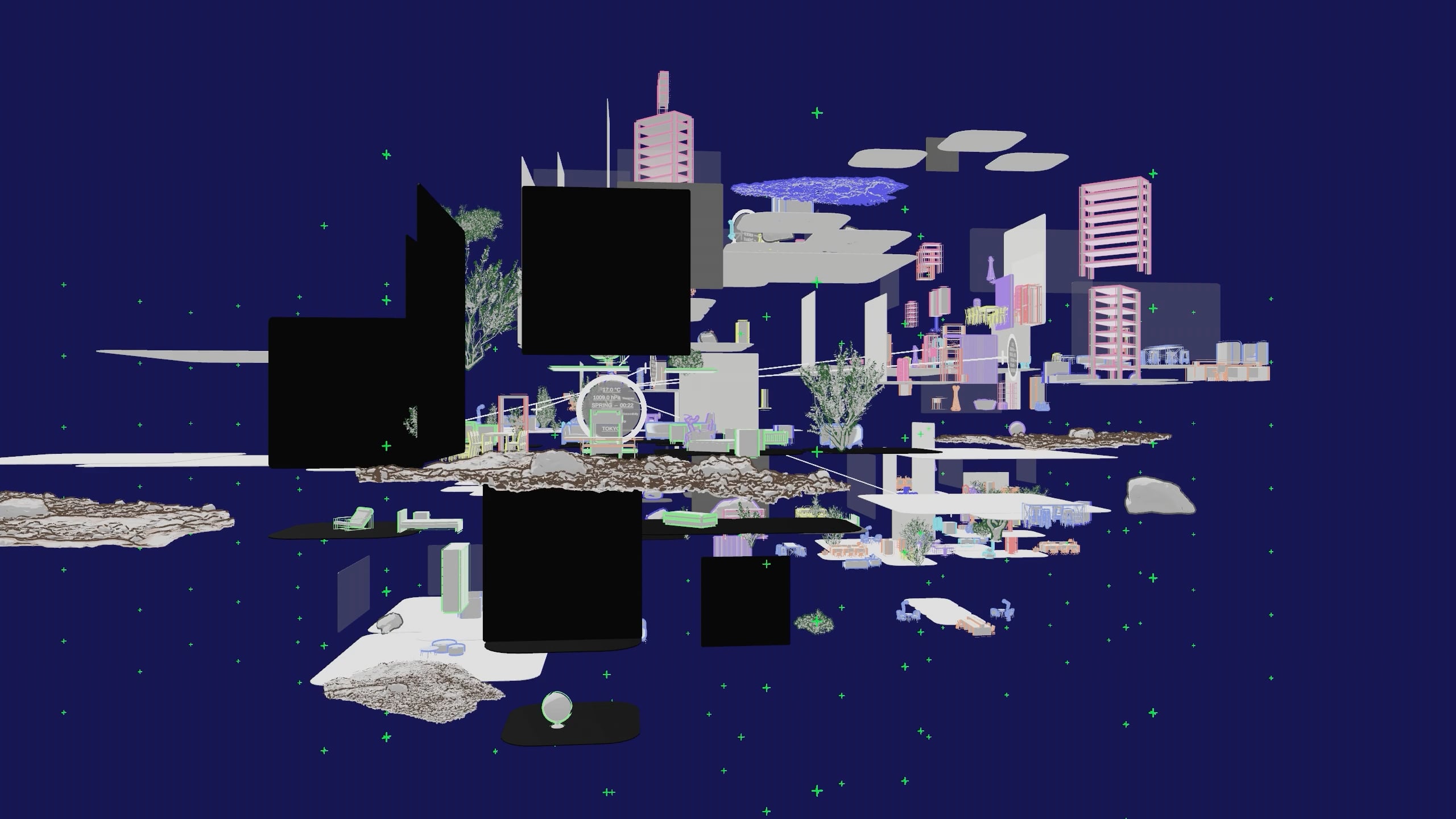
Atomized (re-)Staging (2022/23)
Video
Atomized (re-)Staging represents an alternative version to two past landmark exhibitions — Iconoclash at ZKM, in 2002 and Les Immatériaux at Centre Pompidou, in 1985 — and their digitized artworks. Exhibited at the ZKM (12.2022 – 04.2023) and displayed on its own servers amidst their calculations, Atomized (re-)Staging brings together 3D models of the artworks from these two past exhibitions into a new museum experience.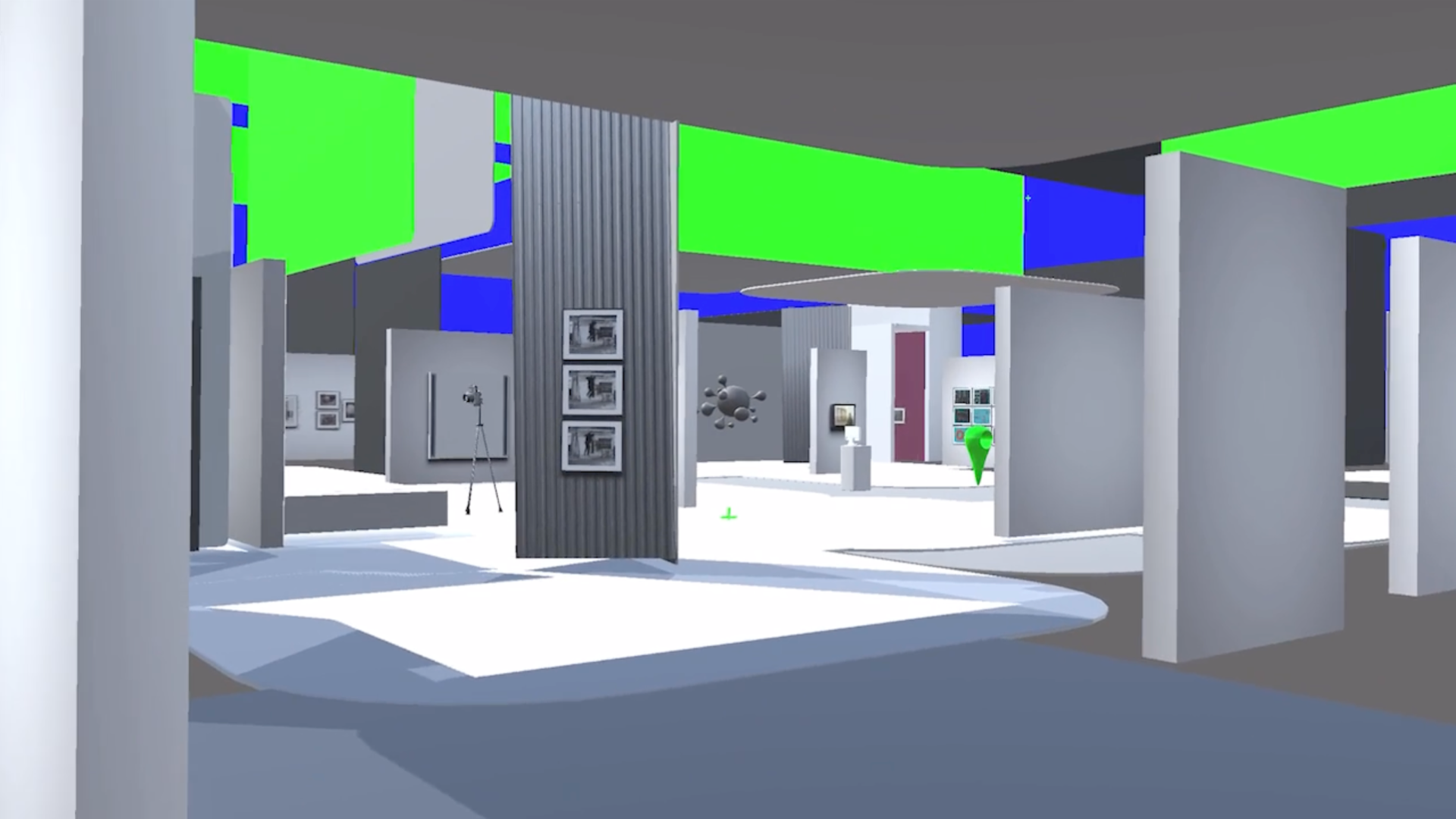
Images & documentation
As an alternative digital version to two past exhibitions of historical significance — Les Immatériaux at Centre Pompidou, in 1985, and Iconoclash at ZKM, in 2002 —, fabric | ch was commissioned to create a new algorithmic piece exhibited at ZKM | Karlsruhe (DE), as part of an ongoing suite of experimental architecture works named Atomized (*).
Entitled Atomized (re-)Staging, the new spatial and museography experiment aims to autonomously build versions of digital exhibitions, in which the artworks themselves, considered as “elementary particles”, aggregate to create their own continuously evolving museal space. It is based on more than 200 digitized artworks from the two past exhibitions.
Download documentation (PDF)
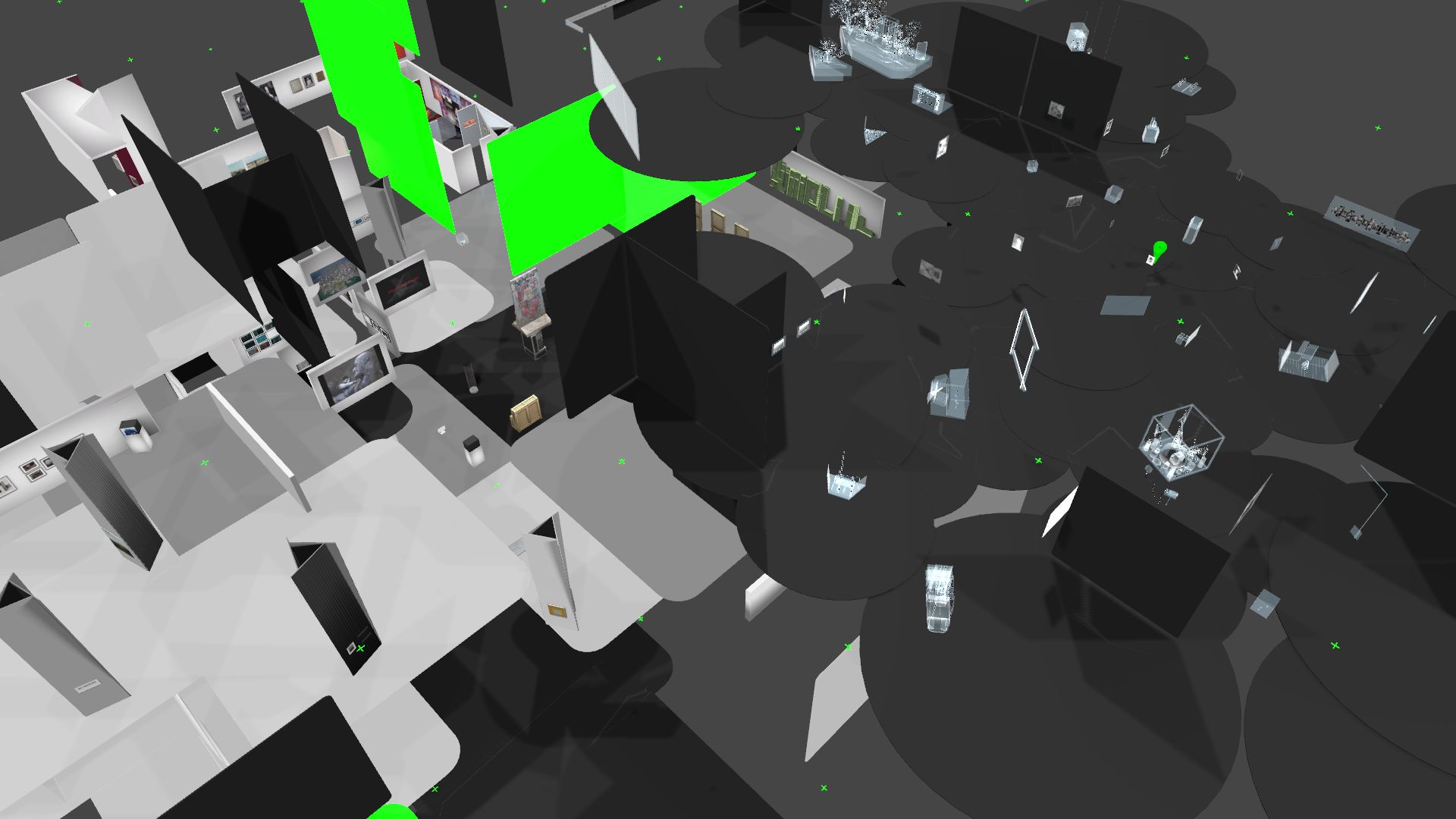
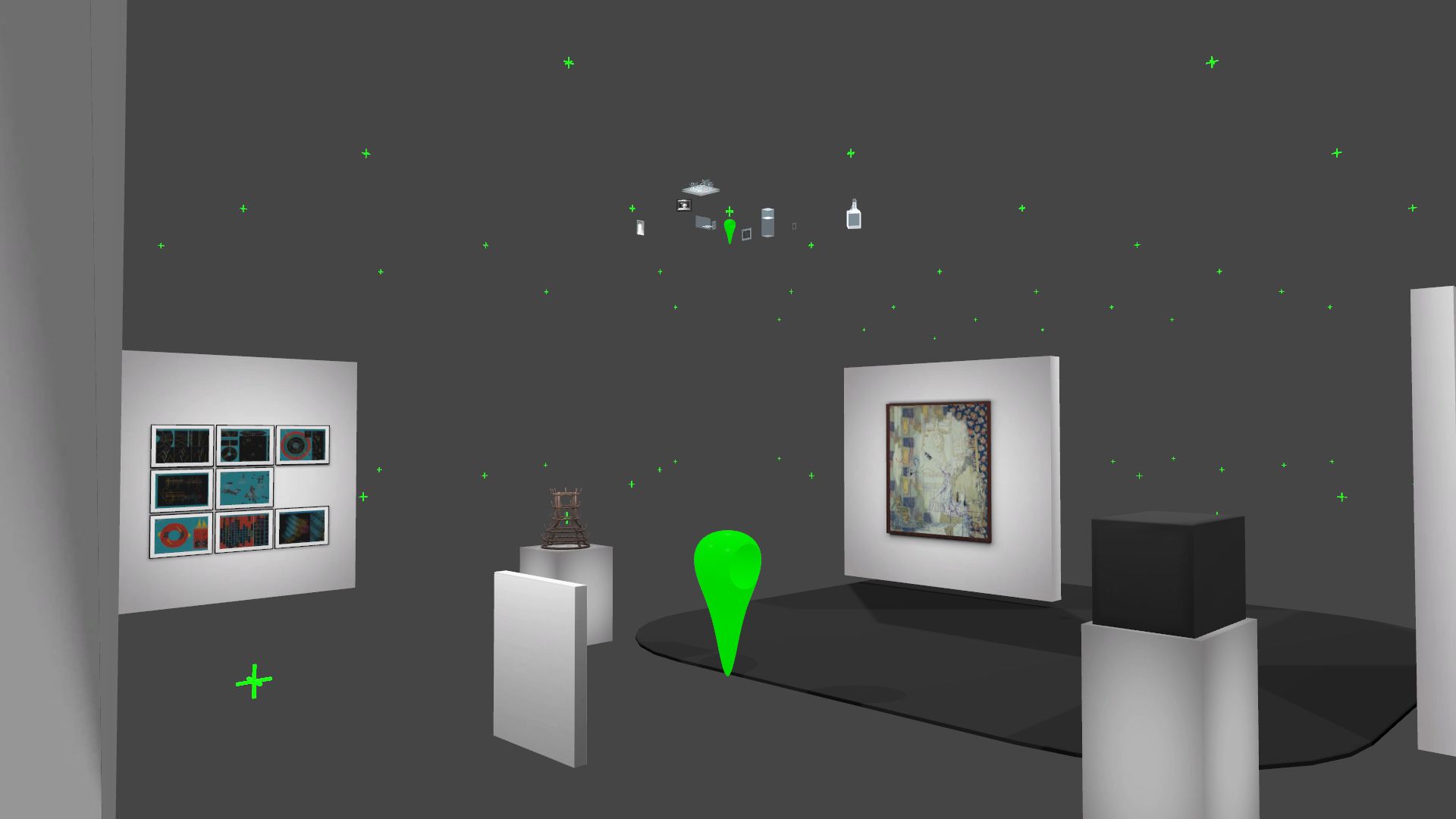
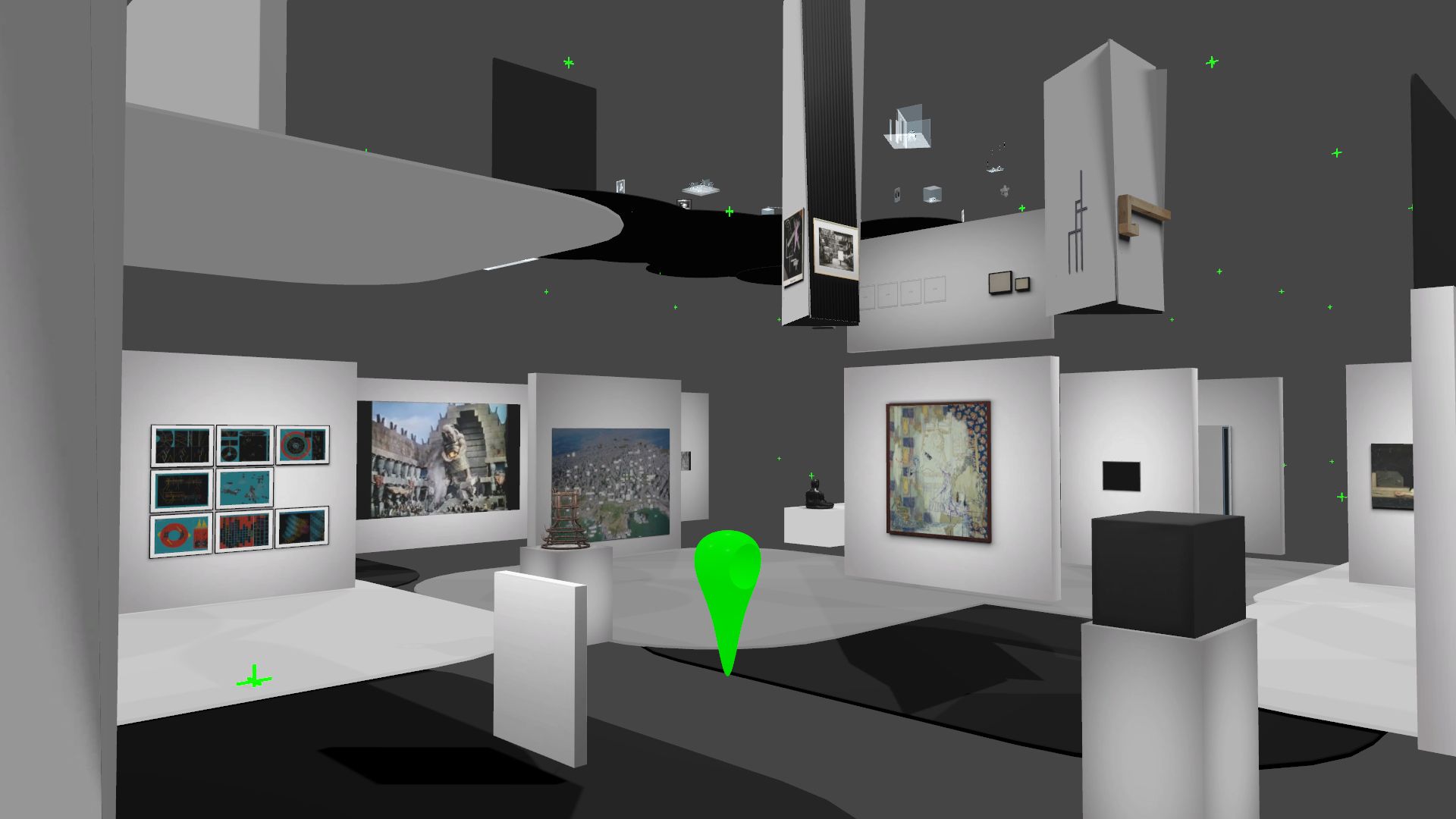
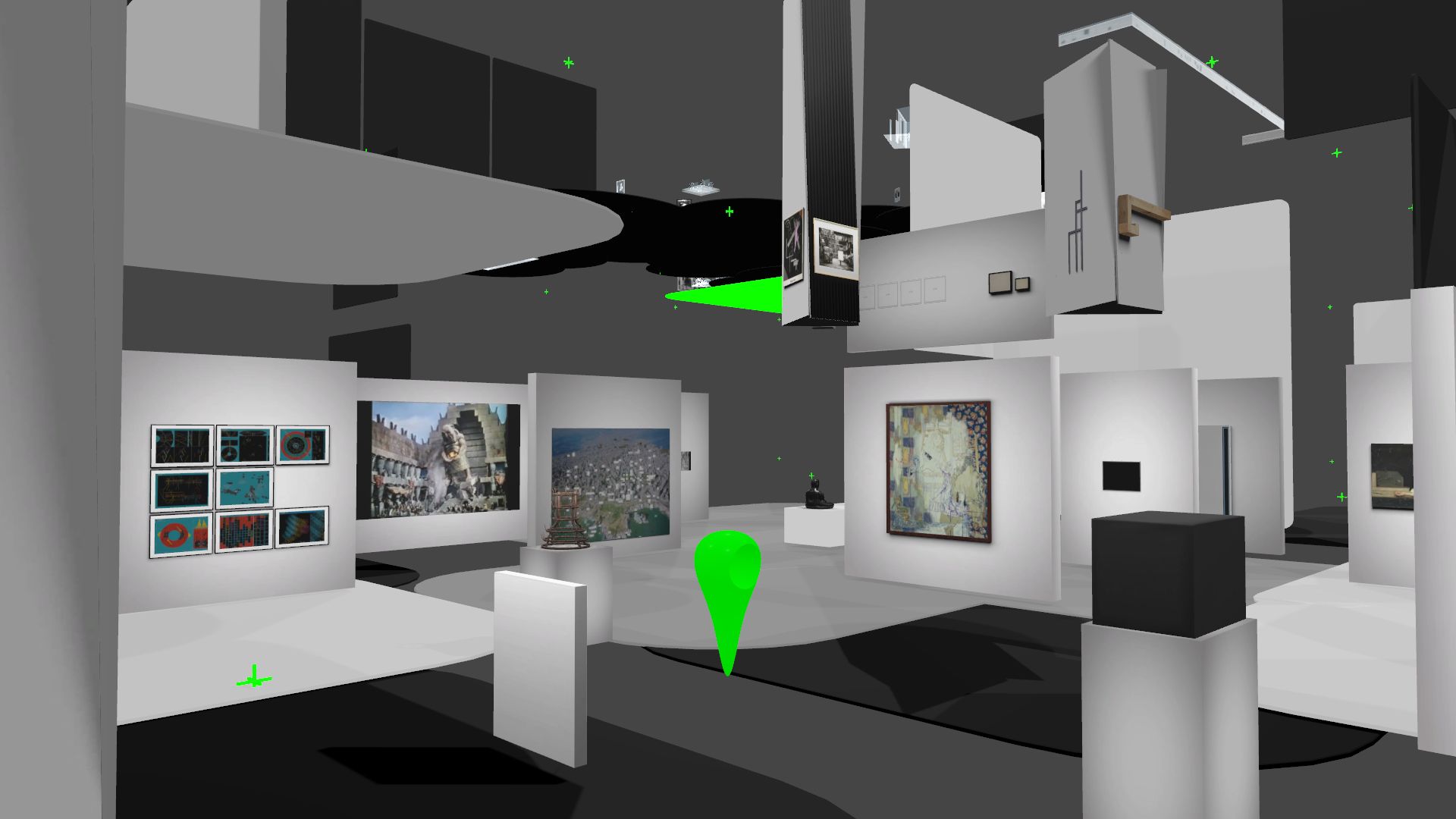
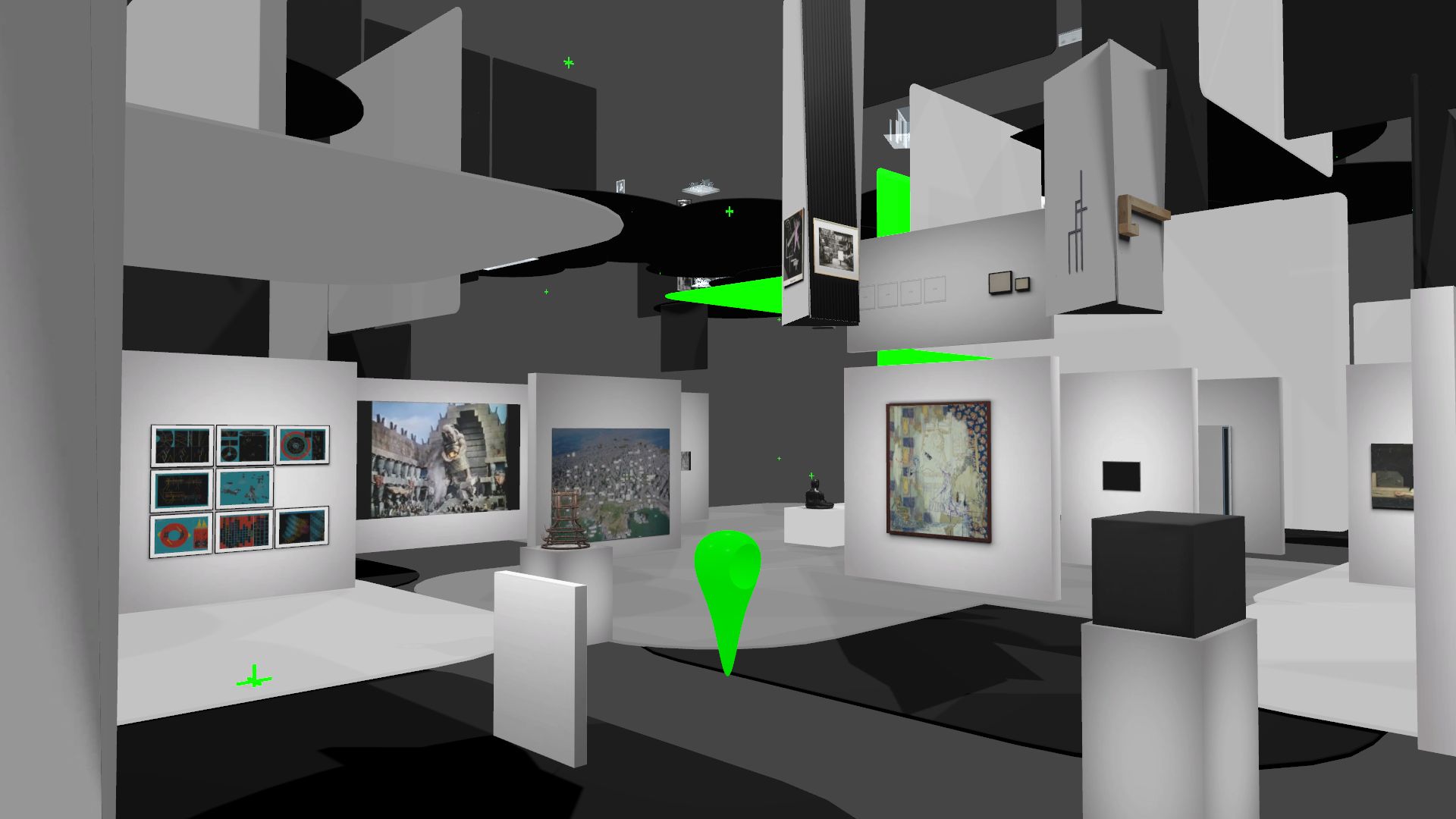
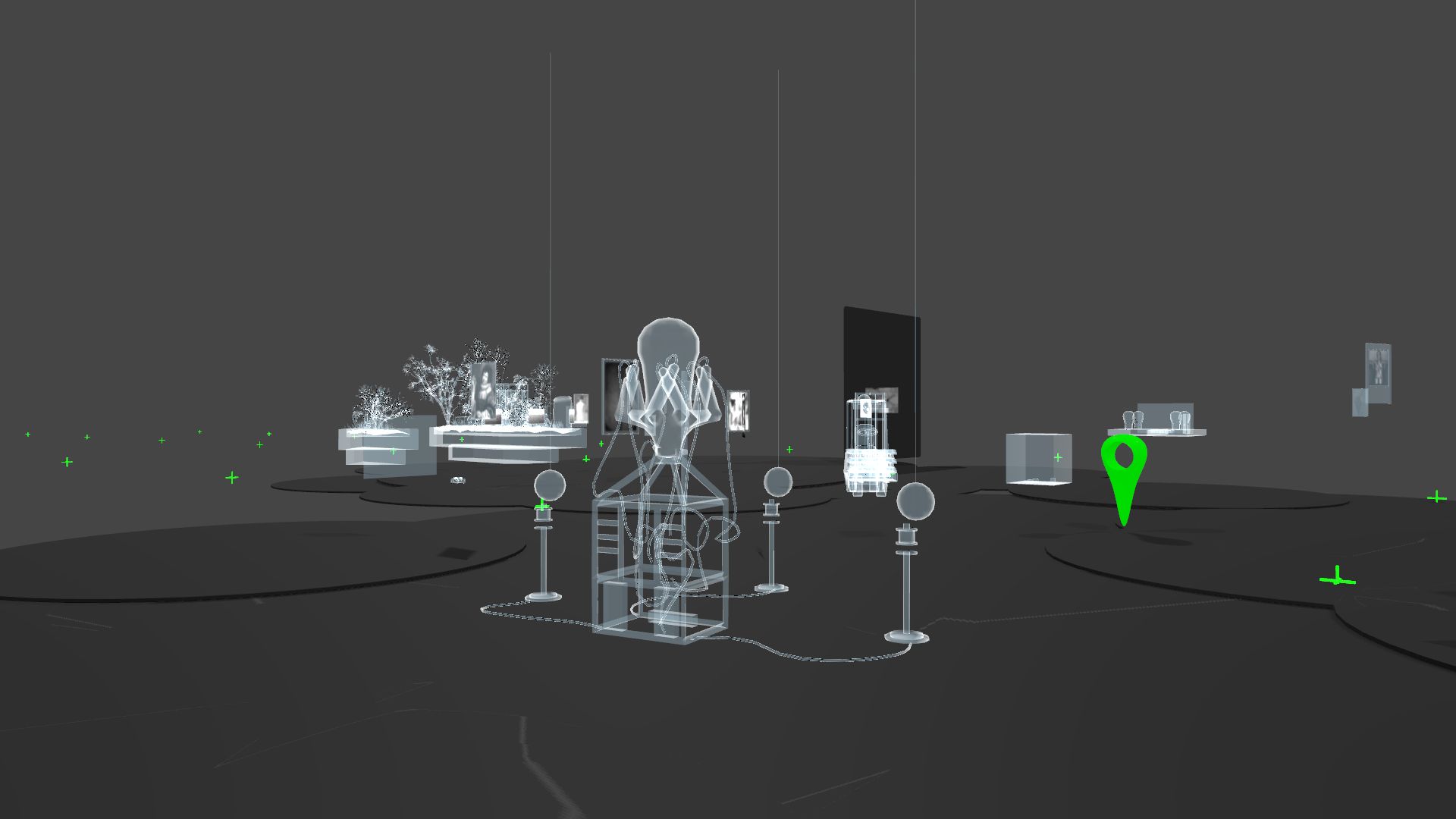
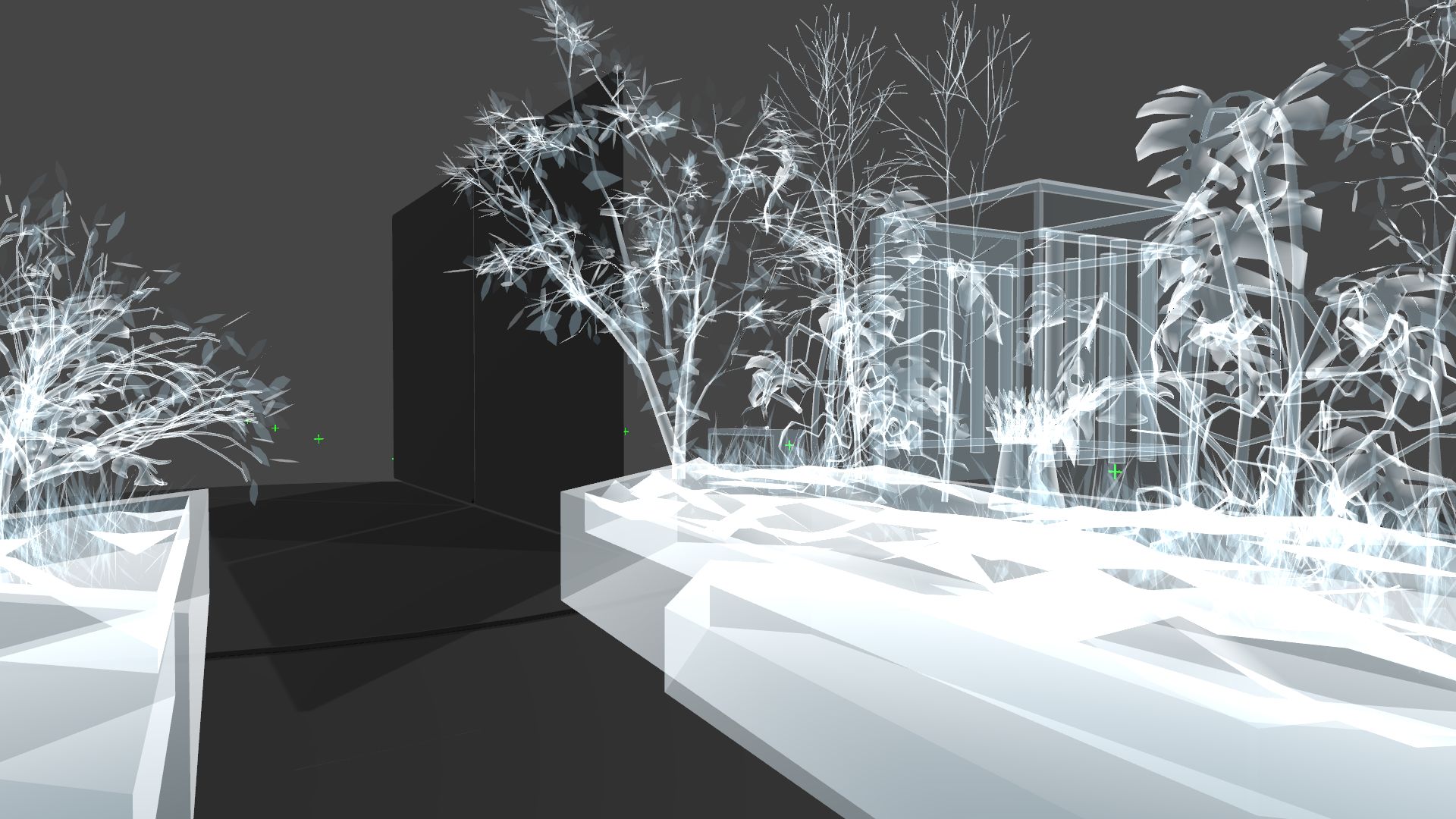
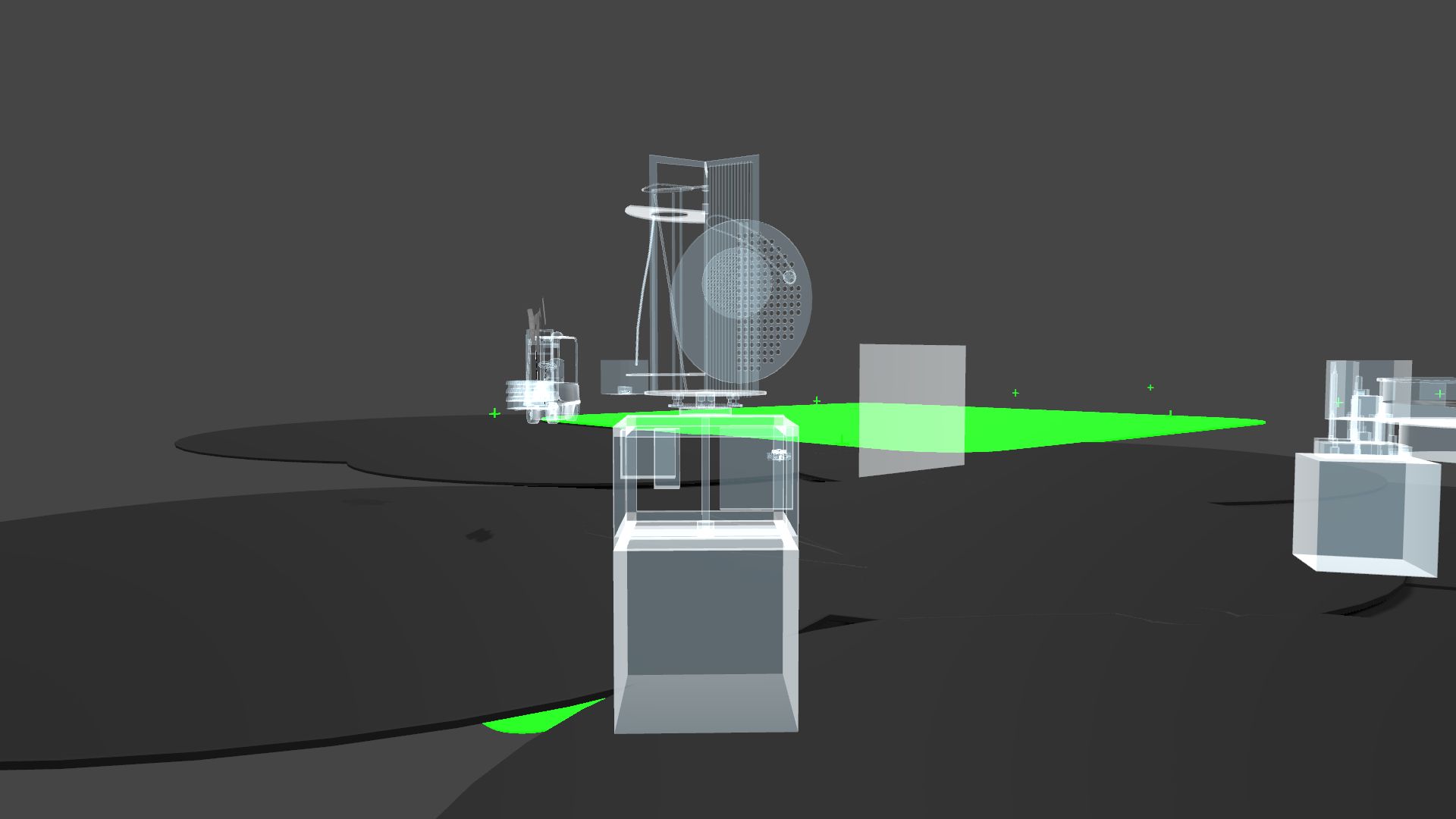
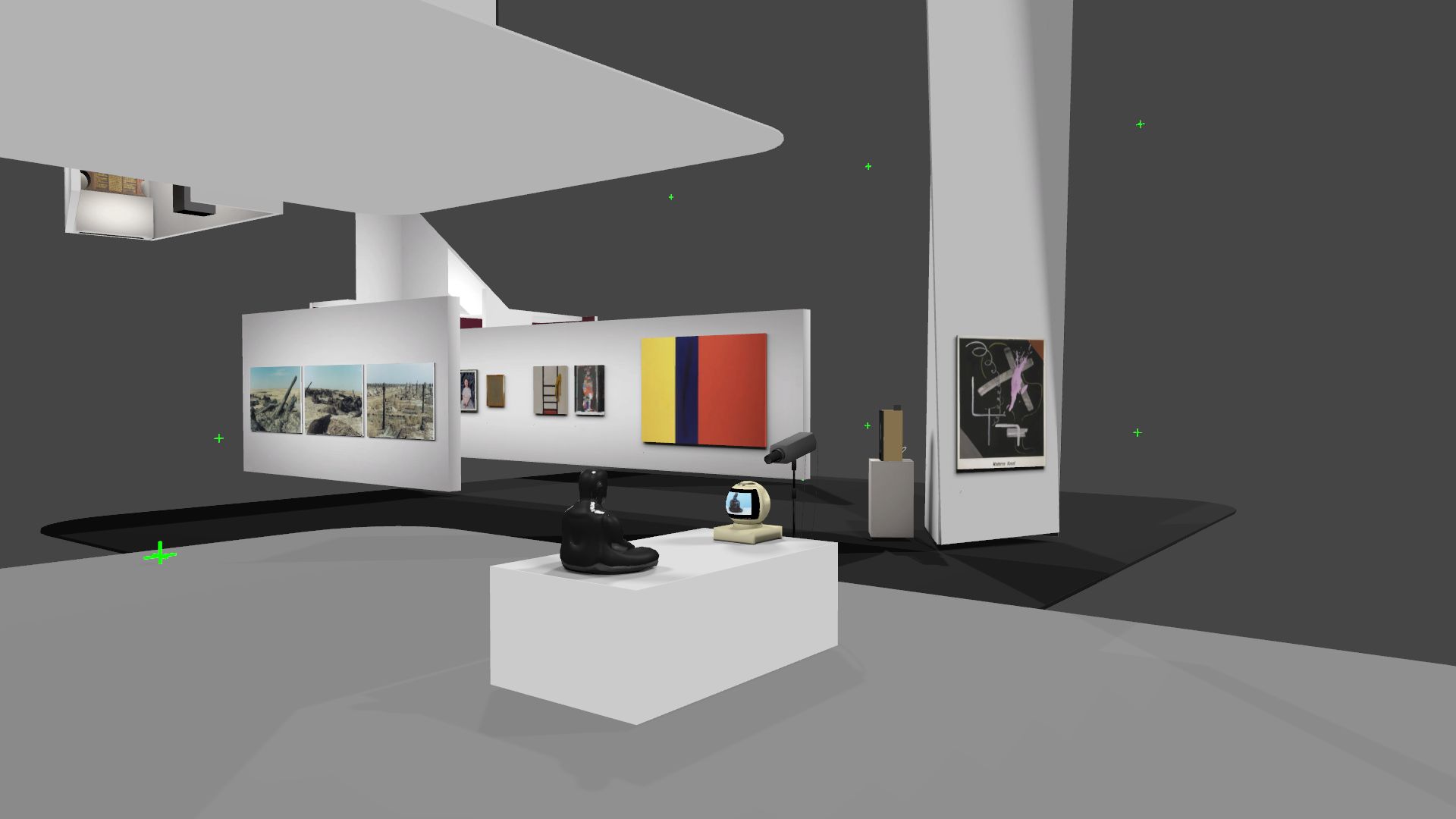
Text
As an alternative digital version to two past exhibitions of historical significance — Les Immatériaux at Centre Pompidou, in 1985, and Iconoclash at ZKM, in 2002 —, fabric | ch was commissioned to create a new algorithmic piece exhibited at ZKM | Karlsruhe (DE), as part of an ongoing suite of experimental architecture works named Atomized (*).
The new piece is displayed on its own servers in the midst of calculations, while endlessly and autonomously re-staging the digitized artworks of these two past landmark exhibitions into new and ever evolving museography and combined screen-based experience.
Entitled Atomized (re-)Staging, the new spatial and museography experiment aims to autonomously build versions of digital exhibitions, in which the artworks themselves, considered as “elementary particles”, aggregate to create their own continuously evolving museal space. It is based on more than 200 digitized artworks from the two past exhibitions.
Machine Learning is at work on the project's main server(s), which attempts to endlessly reorganize the interpretable digital objects within the computer-generated space. It explores the possibilities of spatial self-organization of works according to a selection of objective parameters (light, noise, size, viewing distance) and their rules of combination, certain functional elements of the digital exhibition (use of partitions, floors and their albedos, lighting, etc.), and other higher curatorial categories linked to the original exhibitions (materiality, representation). It also looks at the possibility of connecting the assemblage to live inputs (sensors). The system generates its own datasets of potential exhibits and gradually learns from these training sets, steadily converging on a result.
Each new result is then printed and stored for remote display on mobile screens (iPads), for extended observation by visitors within the museum and from any location, until a successor exhibition finding replaces it. Each result becomes the new temporary exhibition that, with the help of mobile displays, can be visited in an immersive way by inventing one's own walking circuit. This path develops between the physical environment in which the visitor finds him/herself and the digital counterpart — an almost hybrid “dérive” — and while maintaining a relationship of movement, space, and scale with the digital, or digitized artworks.
Convened and specified by fabric | ch, the concept of “atomization” is at the heart of this project and of the entire Atomized (*) series of works (Atomized Functioning – 2016, Atomized (algorithmic) Functioning – 2018, Atomized (curatorial) Functioning –2019/20, Atomized (re-)Staging – 2022/23). It marks the programmed and automated continuation of the collective's research and approaches to contemporary hybrid space over the past decade.
The process of “atomizing” entities into “elementary particles” (whose granularity remains open to different contexts and experimentation), and then their reaggregation into new forms according to rules written and scripted for each occasion — while considering issues linked to questions of digital materiality — enables the collective to intensively probe the potentialities of today's spaces.
Atomized (re-)Staging has been commissioned by ZKM | Karlsruhe and Centre Pompidou (FR) in the context of the European research project Beyond Matter. The project has been exhibited at ZKM (exhibition Beyond Matter, 12.2022 — 04.2023) and presented at Centre Pompidou during Moviment festival (07.2023).
fabric | ch, June 2023
Atomized (curatorial) Functioning (2019)
Video
Caption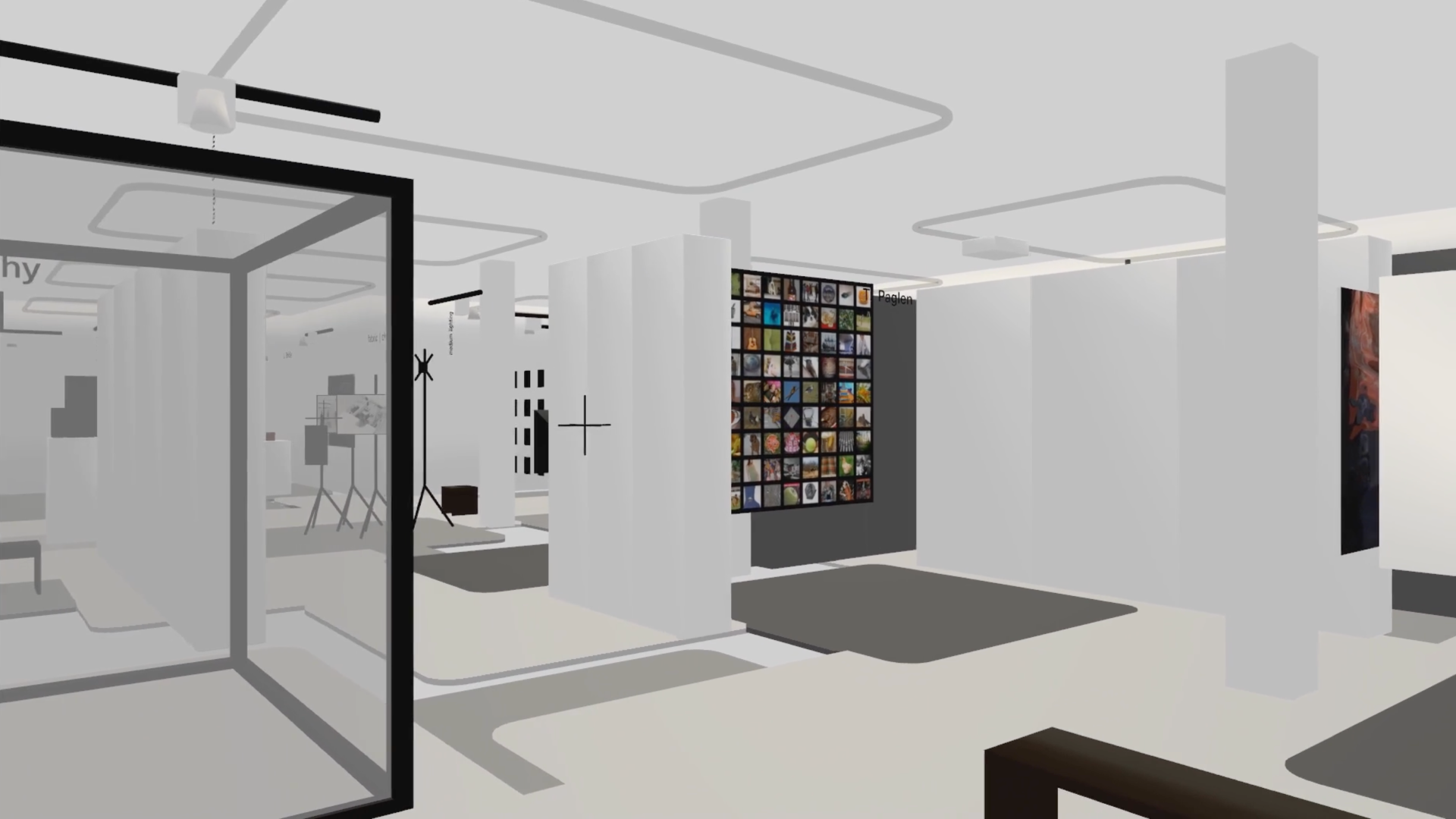
Images & documentation
“Atomized (curatorial) Functioning” is the second iteration of Atomized (*) series of projects that involve machine learning and rule-based autonomous design procedures.
It was first exhibited at the House of Electronic Arts (HEK, Basel) in the context of Entangled Realities, Living with Artificial Intelligence (2019) and then during Art and Science in the Age of Artificial Intelligence at the National Museum of China (Beijing).
In this context, fabric | ch proposed an automated curating and exhibition scenography, based on rules of association and display established by the artworks to be exhibited themselves.
With the support of Haus der elektronischen Künste and the State of Vaud (Switzerland).
Download documentation (PDF)
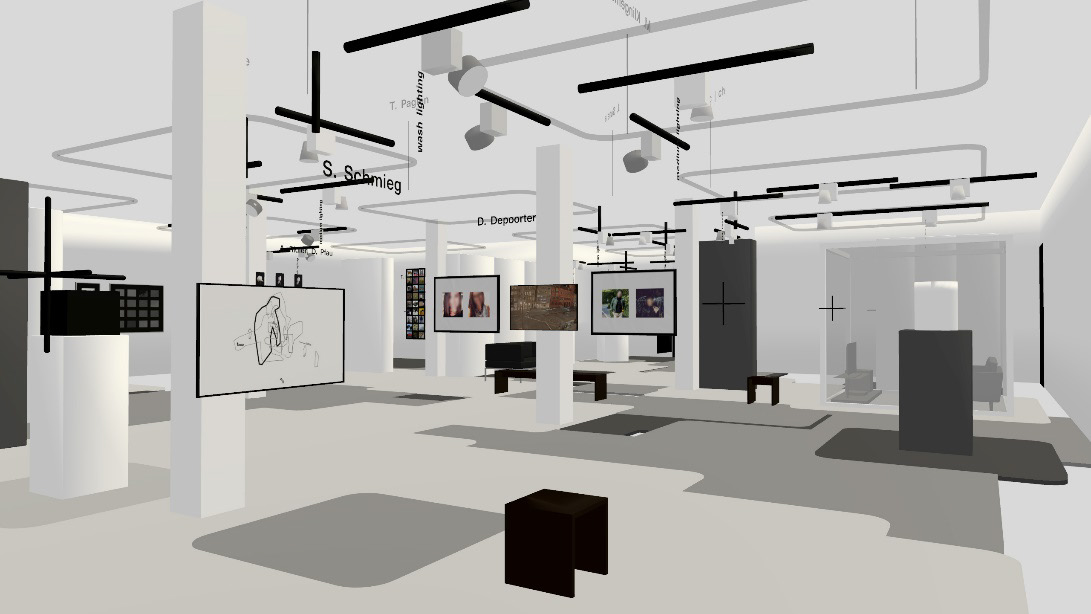
Automations algorithmiques (interview, 2020)
“Automations algorithmiques et créolisation” is an interview of Christophe Guignard and Patrick Keller by Nathalie Bachand for the Canadian magazine ESPACE, art actuel.
The discussion deals with topics related to the use of automated techniques and procedures in the context of creative projects
Automations algorithmiques et créolisation, Espace 124, 2020 (in French, PDF)
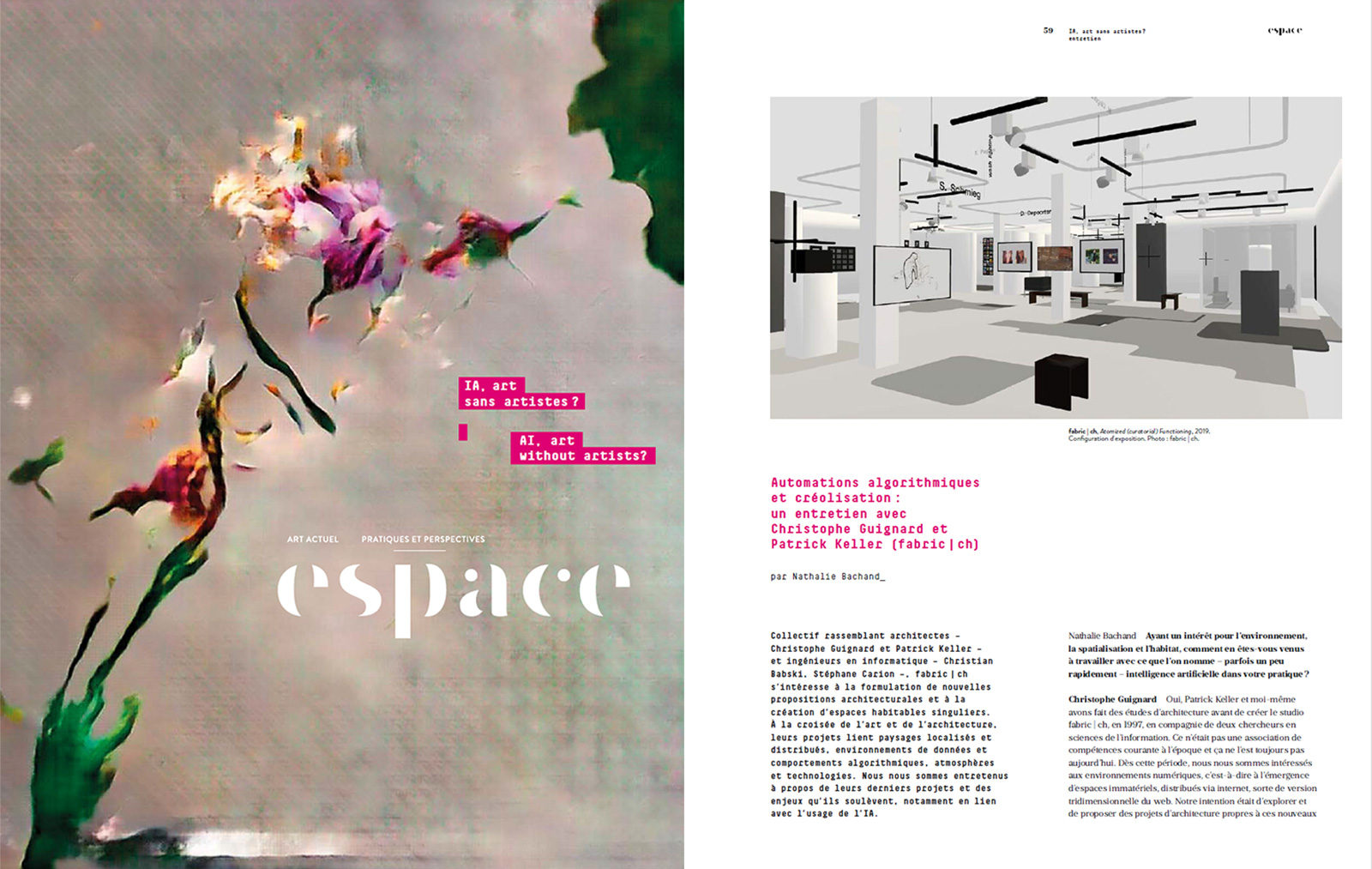
Entangled Realities (text, 2019)
This text, written by Sabine Himmelsbach (HEK), is an extract of the exhibiton catalogue Entangled Realities - Living with Artificial Intelligence published by the Haus der elektronischen Künste (HEK, Basel) and Christoph Merian Verlag.
On this occasion, fabric | ch was commissioned to create an original piece of software that automated curating and exhibition scenography, according to rules based on the data of the exhibited artworks.
More info about the exhibition Entangled Realities - Living with Artificial Intelligence (09.05 - 11.08.19).
Entangled Realities, 2019 (text, PDF)
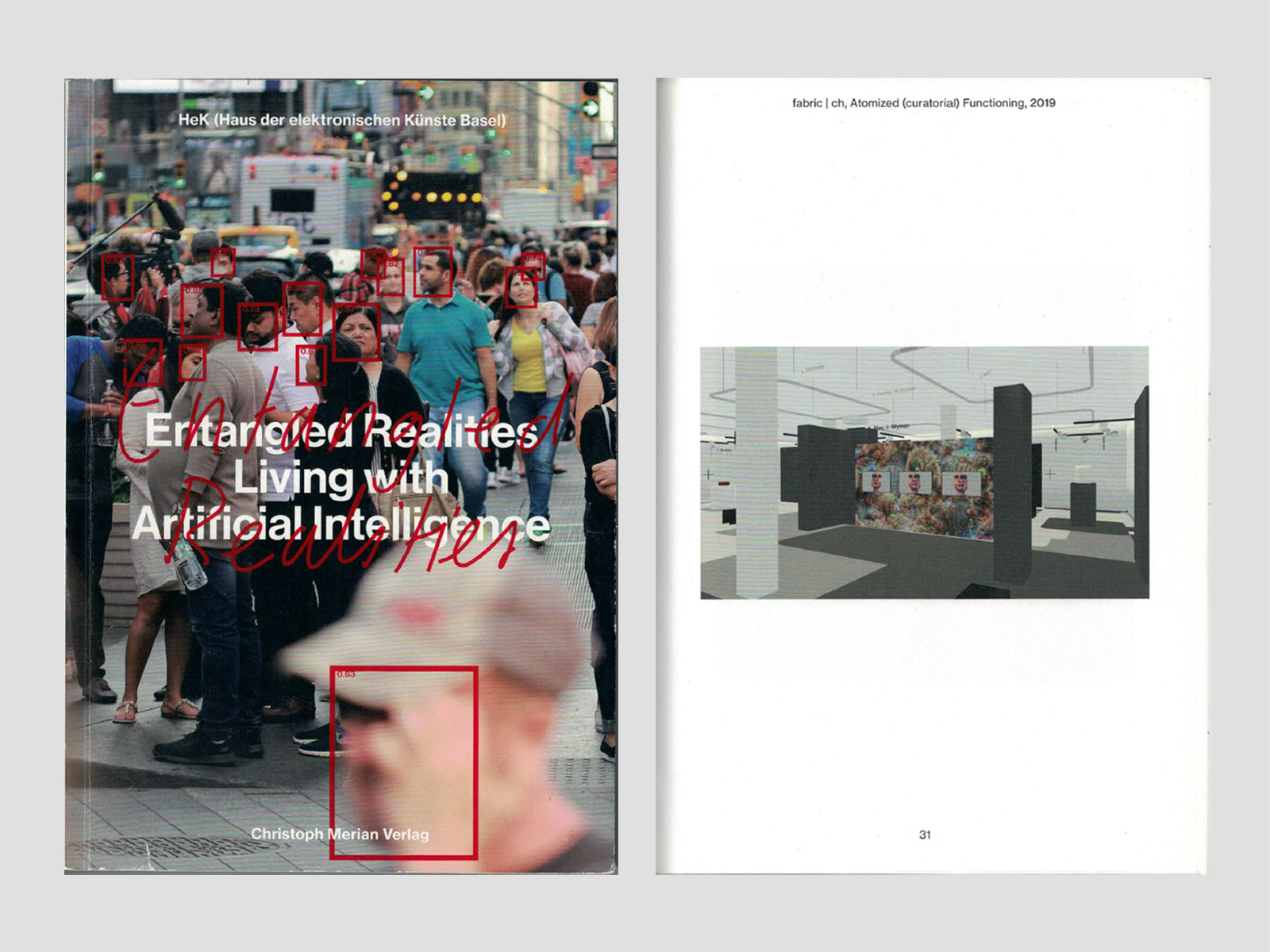
Atomized (algorithmic) Functioning (2018)
Images & documentation
Atomized (algorithmic) Functioning is an architectural and programmatic software based on real-time inputs of live environmental data (both digital and physical atmospheric components), their combination and their interpretation.
Based on atmospheric data (heat maps of monitored wifi signal strength, temperature, humidity and luminosity), Atomized (algorithmic) Functioning starts to build spatial and functional configurations from “atomic” architectural elements that re-aggregate autonomously, following the rules of best atmospheric match and minimum energy consumption.
Download documentation (PDF)
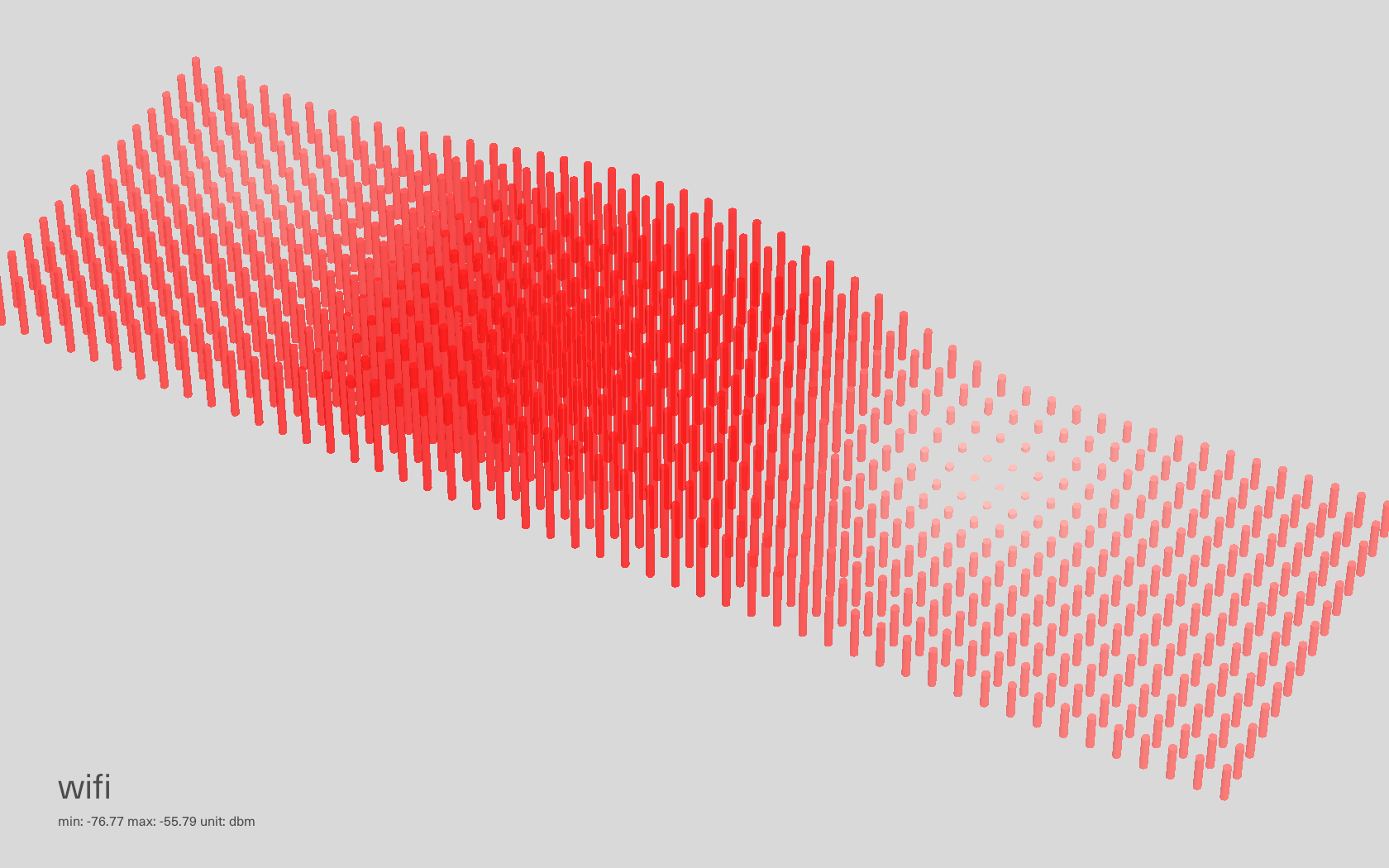
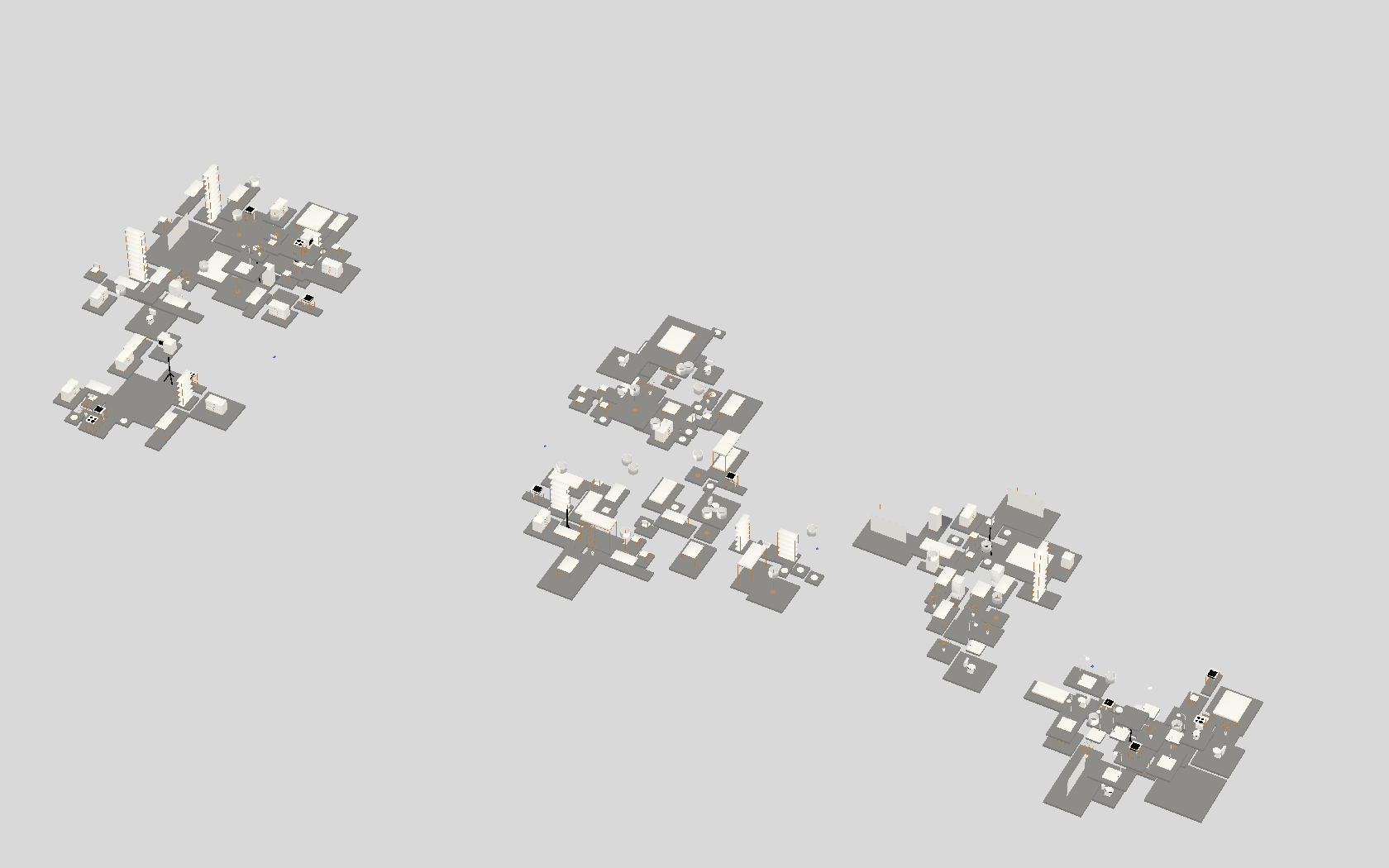
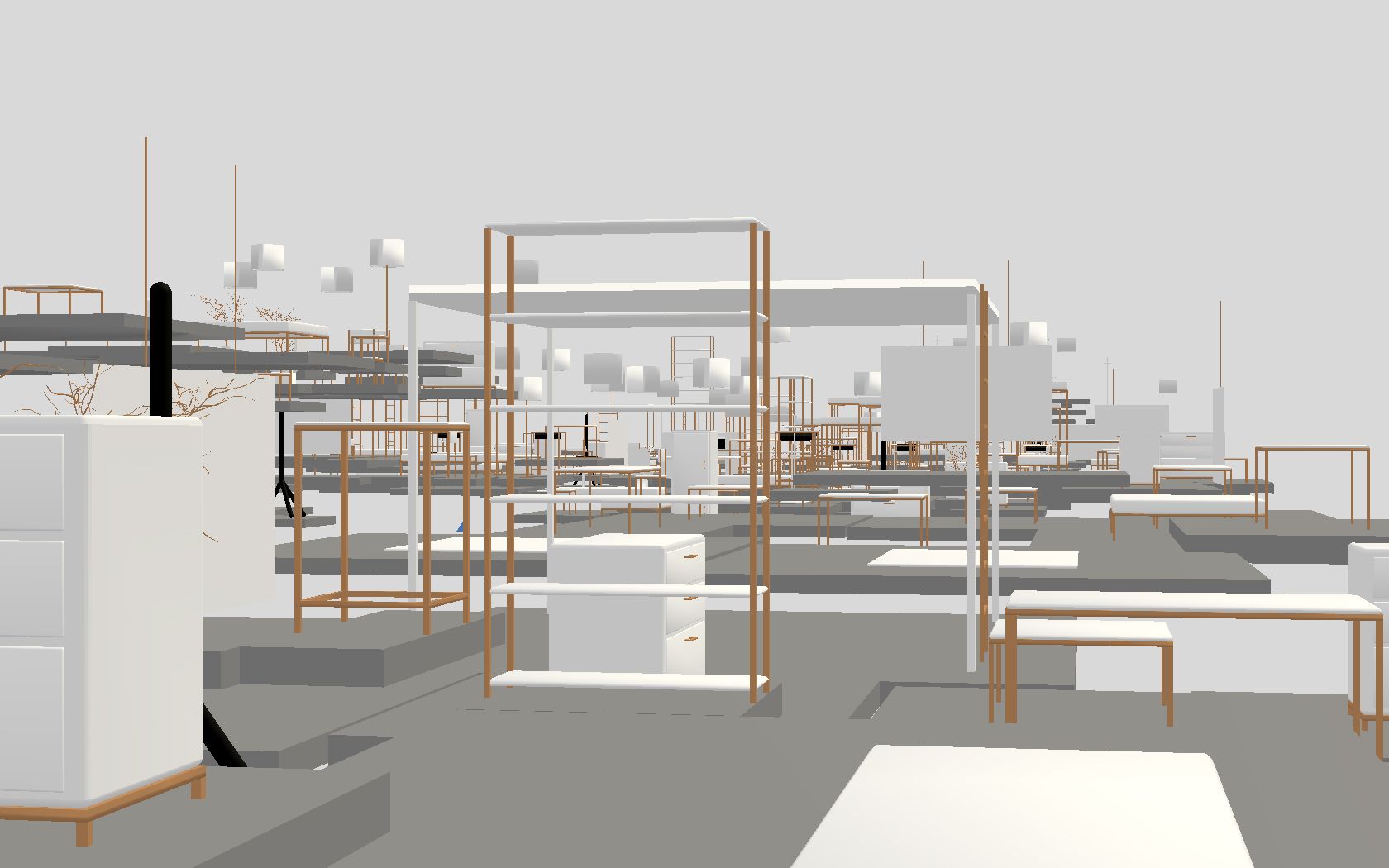
Text
Atomized (algorithmic) Functioning is part of an ongoing series of works: Atomized (*) Functioning, shortened A(*)F. It is the second variation in this series. It can be exhibited and used in different configurations.
A(*)F is an architectural project based on automated algorithmic principles, to which a machine learning layer can be added as required. It is a software piece that endlessly creates and saves new spatial configurations for a given situation, converges towards a “solution” when its AI layer is activated, in real-time 3d and according to dynamic data and constraints.
A(*)F is based on conceptual rules related to the general work and research program of fabric | ch. It is therefore not the “AI” that is important in this work, but rather the automated process of design based on rules defined by the author and the questions it raises.
Based on this program, these rules constantly seek new functional associations related to the physical-digital state of our contemporary environment (“post-digital”, “anthropocenic” or “capitalocenic” some have theorized). To do this, they use “atoms” (or 3d architectural elements in a predefined and atomized granularity) that have been made available to the algorithms to carry out their combinatory constructions. The system digs and searches for unexpected and sustainable reconfigurations (“creolizations”) of these elements according to live data: automated creolized architectures.
The work in progress performed by the AI is continuously displayed on screens of different sizes and quantities, accordingly. The displays can therefore be immersive, analytical or illustrative as required, they could even be robotic and controlled to some extent.
As mentioned, the automated work performed by the AI is not in itself important. The stakes and questions consist in A(*)F’s ability to produce endless spatial proposals and configurations for a certain type of existing conditions — whether dynamic in the form of sensor data and/or static in the form of constraints — and to store them for further analysis by people or algorithms, if desired.
A(*)F has been exhibited and performed for the first time during the Environmental Devices (1997 – 2017) exhibition. A monographic exhibition held by fabric | ch in 2018 at the Kunsthalle Éphémère, in Renens (CH).
fabric | ch, 2018
Preliminary projects & texts (2006-16)
Responsive Atmospheric Patios (2013-16)
Responsive Atmospheric Patios is a project created for a competition of architecture in Sofia (Bulgaria), later turned into self-initiated research about “colliding functions”.
This work develops living environments organized around three atmospherically conditioned and one “unconditioned” patios. It uses atmospheric conditions, both physical and digital, as programmtic rules to search for new aggregations of functions. The latter having being previously fragmented or atomized. The result is a “collision” creating new functional situations of physical-digital entanglements, and possibly new spatial experiences.
Download documentation (PDF)
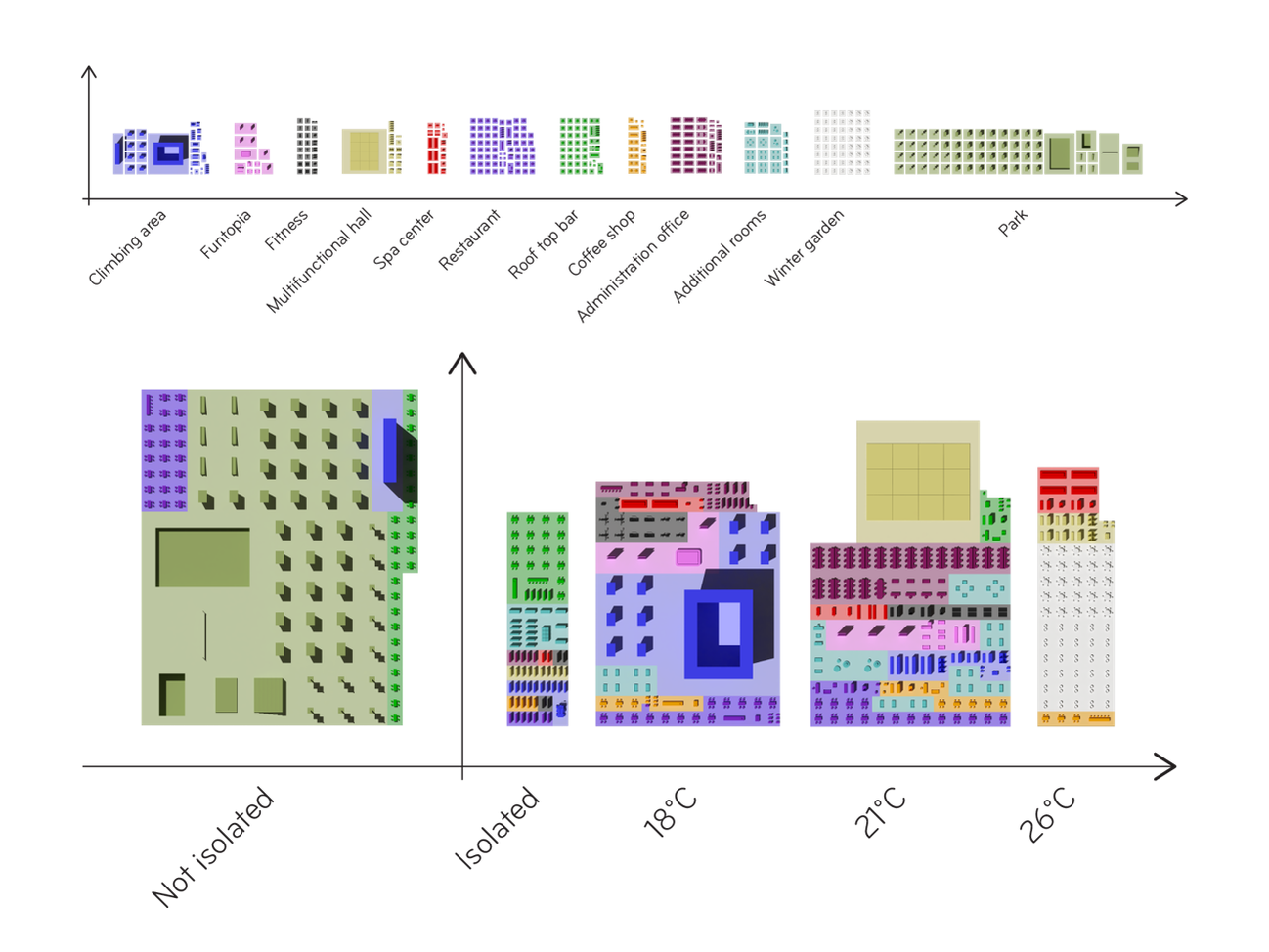
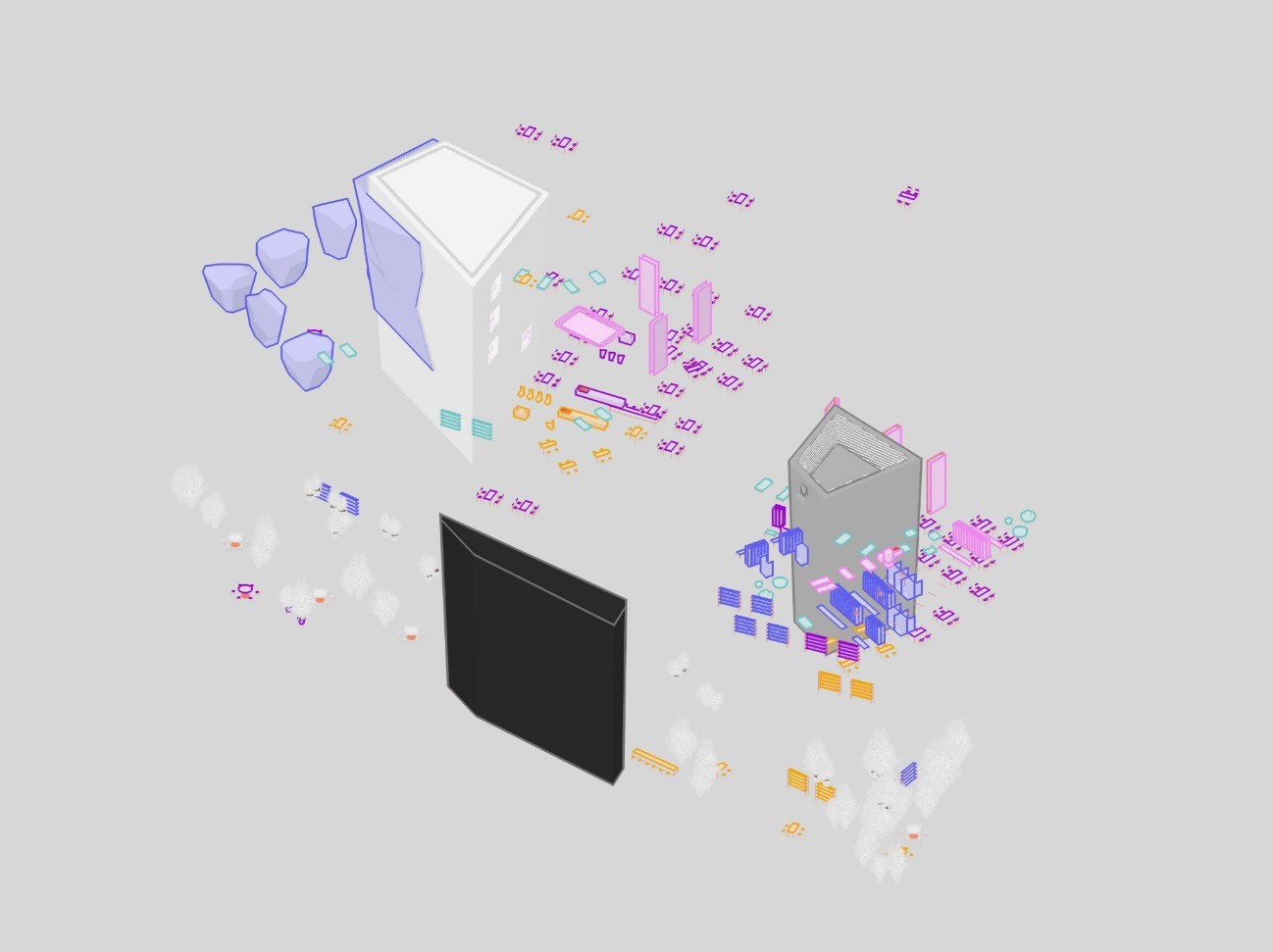
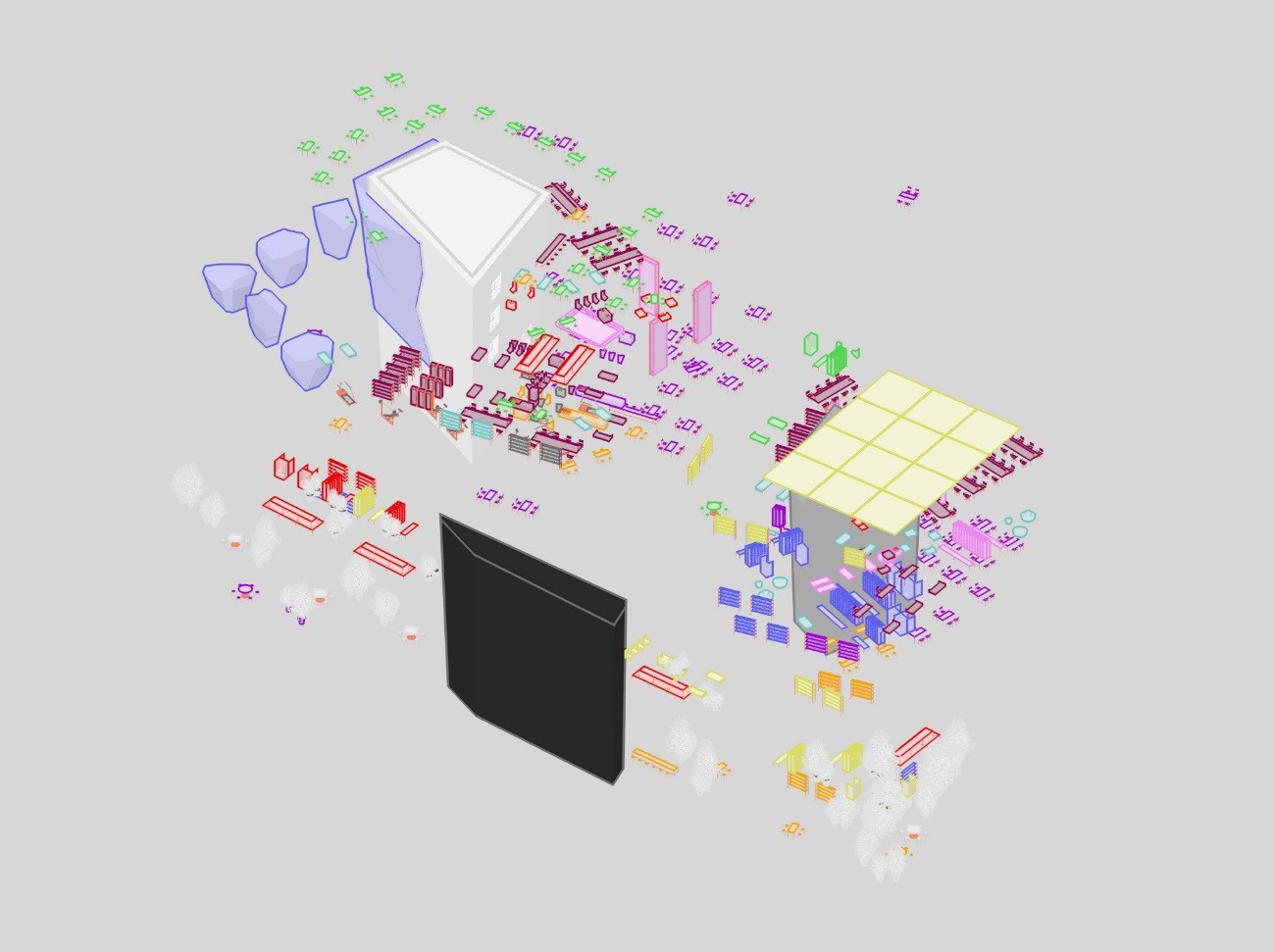
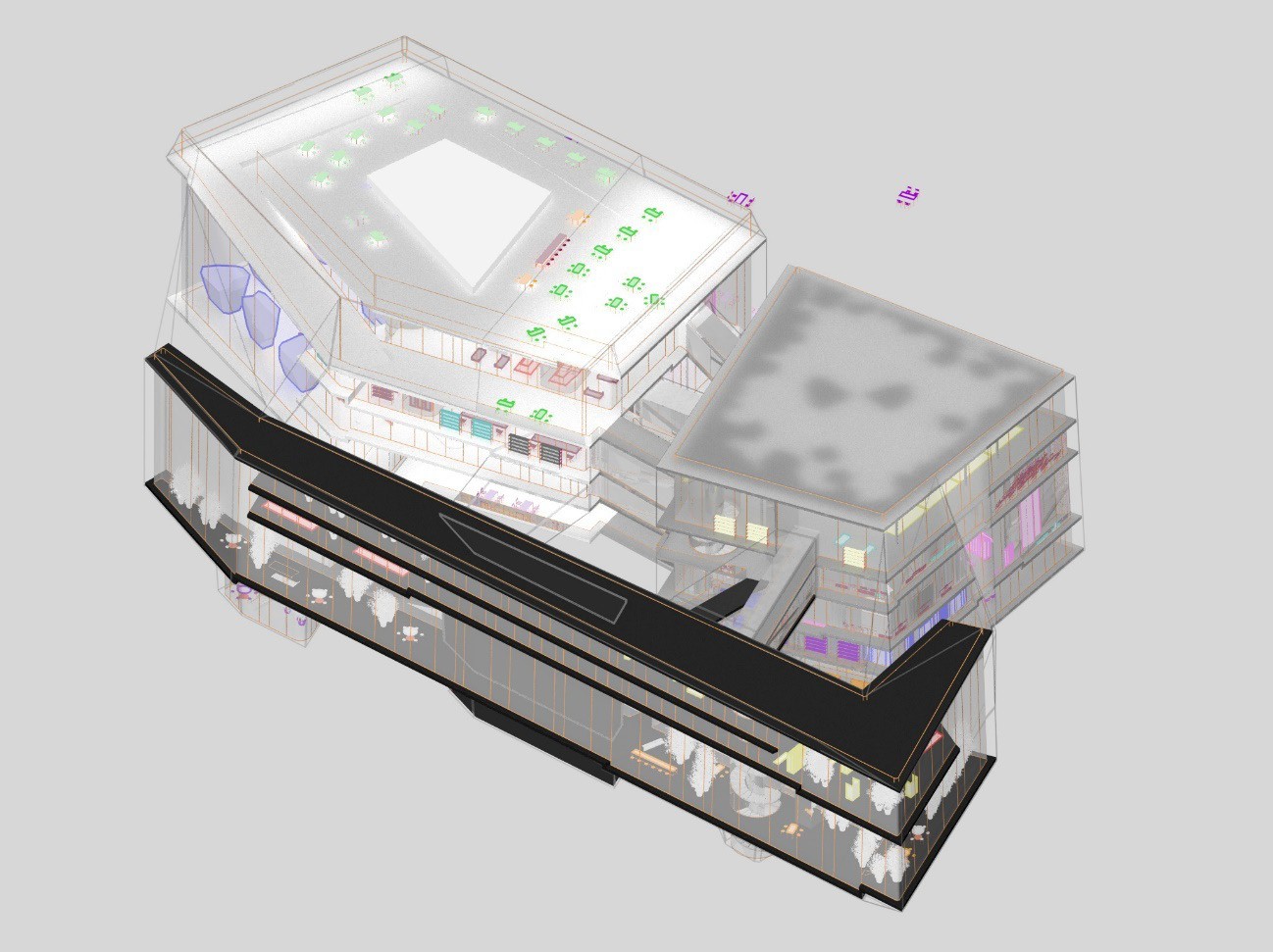
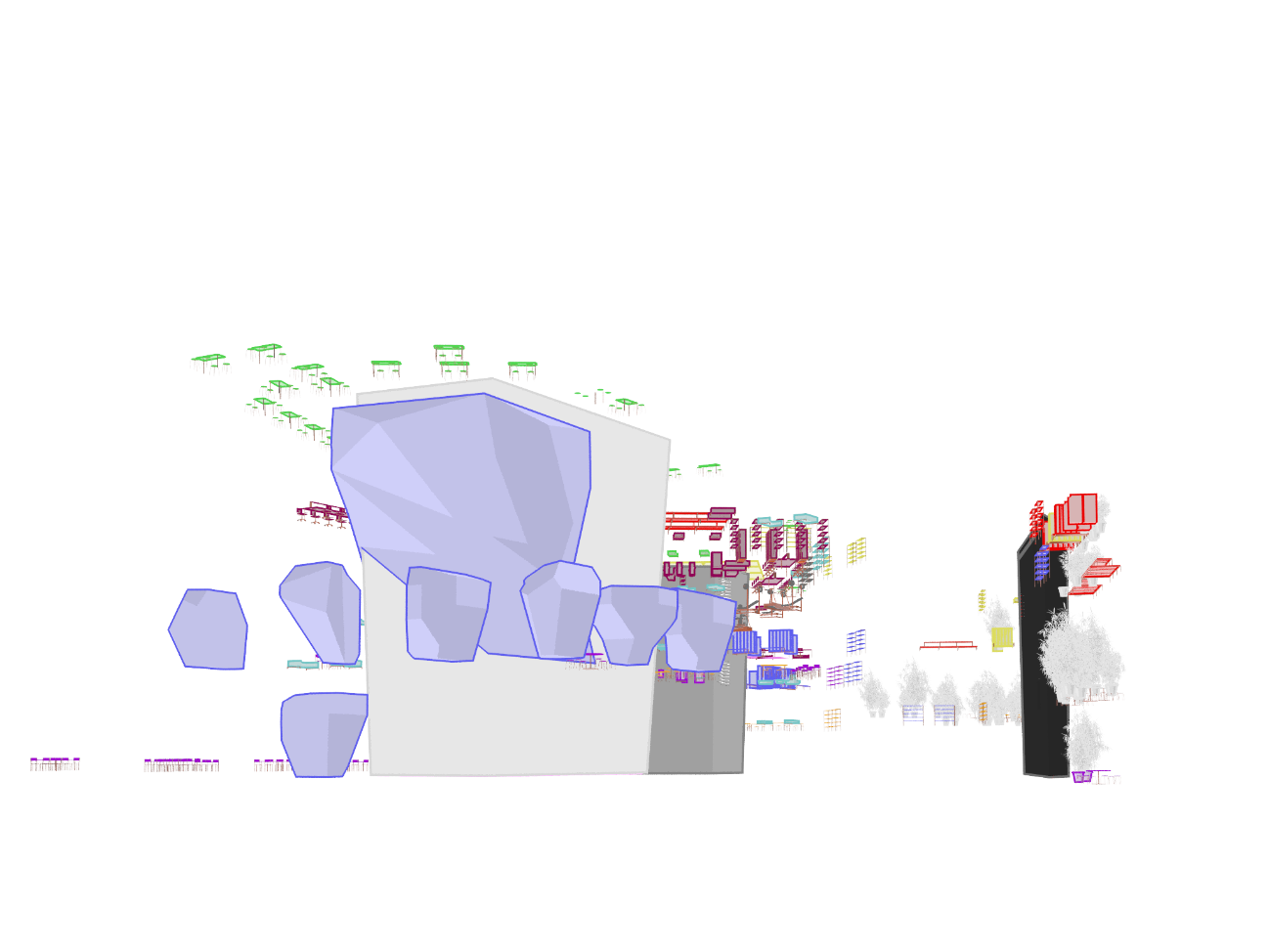
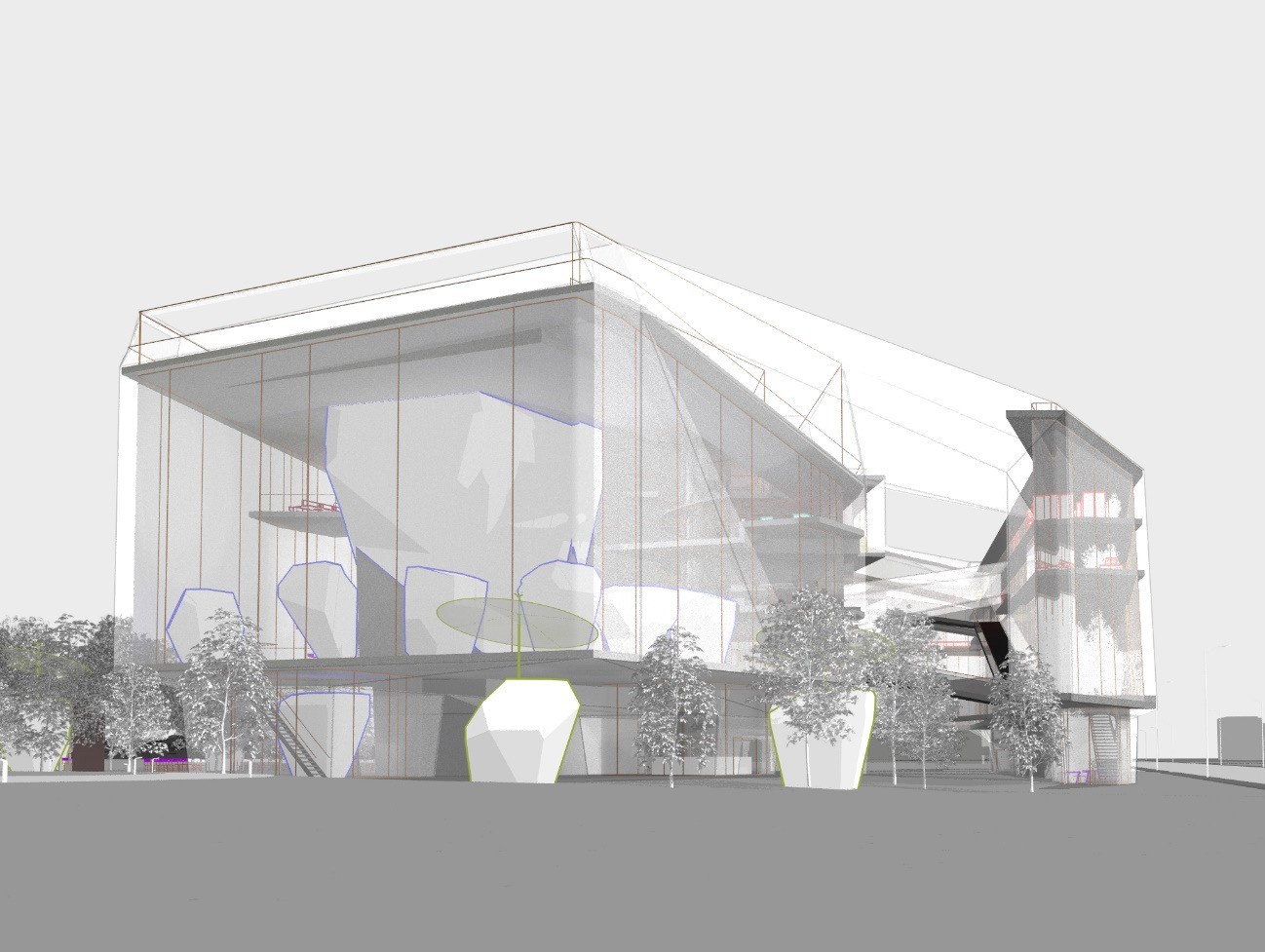
Inhabiting Deterritorialization (2014)
“Inhabiting Deterritorialization” is a text about “Deterritorialized Living”, a project by fabric | ch which proposes an artificial troposphere that reverses our causal relationship to the natural rythms of day and night, air, seasons, time. It was published in Desierto #3, 28° Celsius (2014).
In this text , the concept of 'atomized' functional elements is described for the first time. The intention was to develop a platform that 'sense' its environment in various dimensions (physical, biological, physiological and digital) to 'generate' architecural proposals: 'houses' based on conditional rules of reorgnization, according to these data.
This concept leaded to Atomized (algorithmic) Functioning (2018)
Download article (PDF)
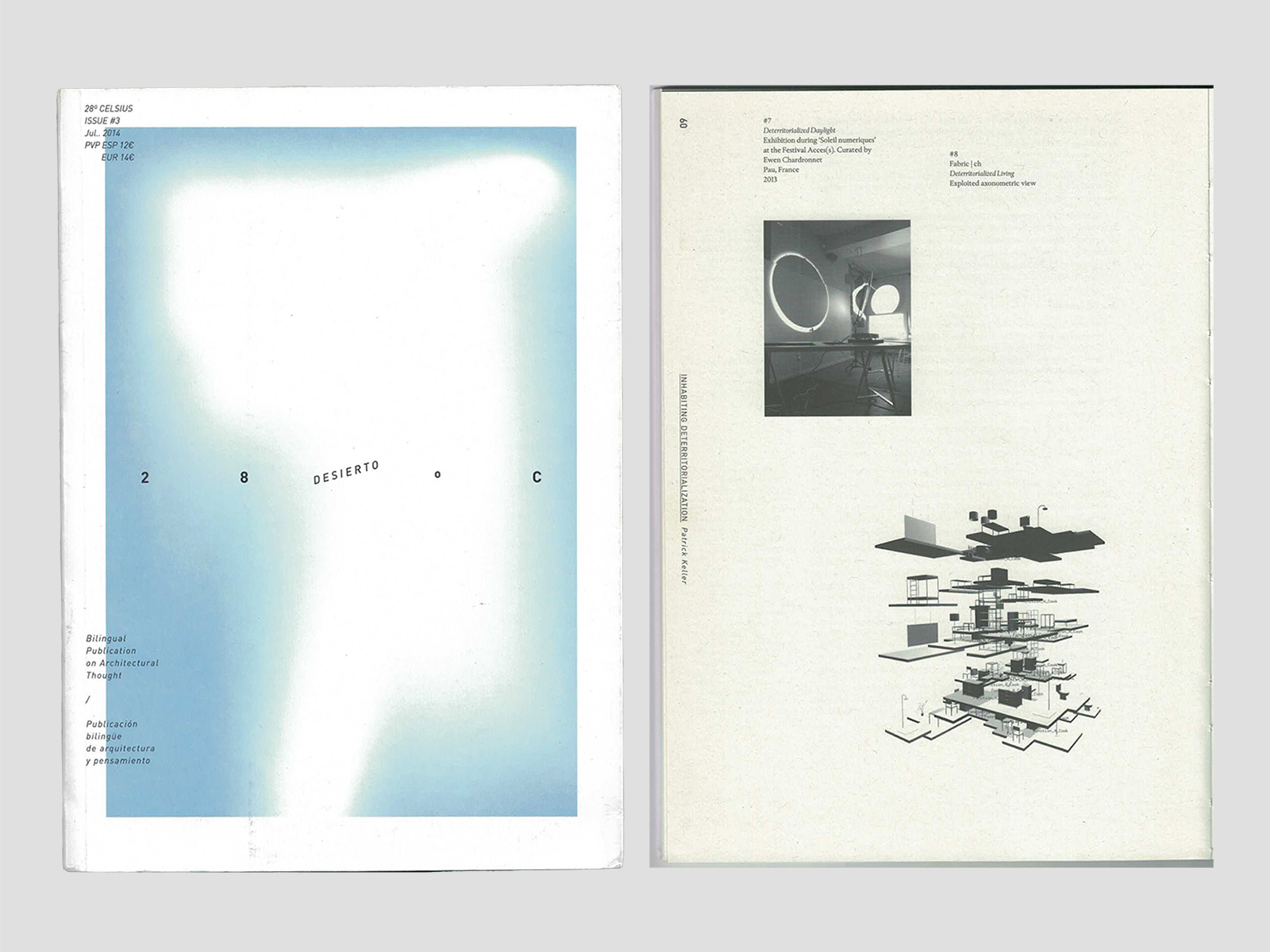
Interférences dimensionelles (2007)
Created for the exhibition « 70 architect(e)s » (Montreal, 19.09-21.10.2007), this architectural « matrix » combines, at various scales, spatial, temporal and climatic dimensions of a series of virtual and actual places.
Athens, Brasilia, Dubai, the intersection of the arctic circle and the date line change, Montreal. Five interconnected referential places to propose new spatial situations.
Download documentation (PDF in French)
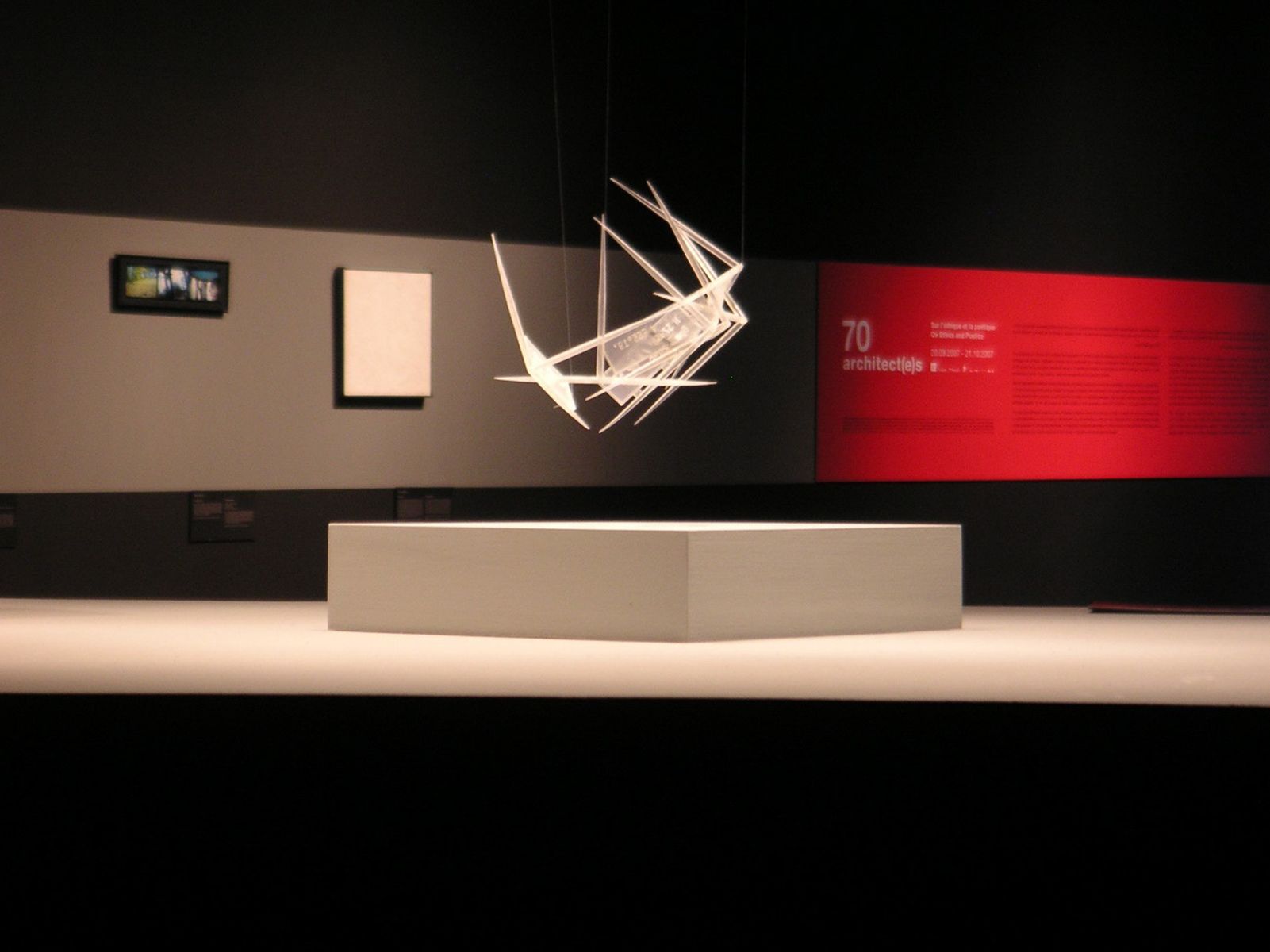
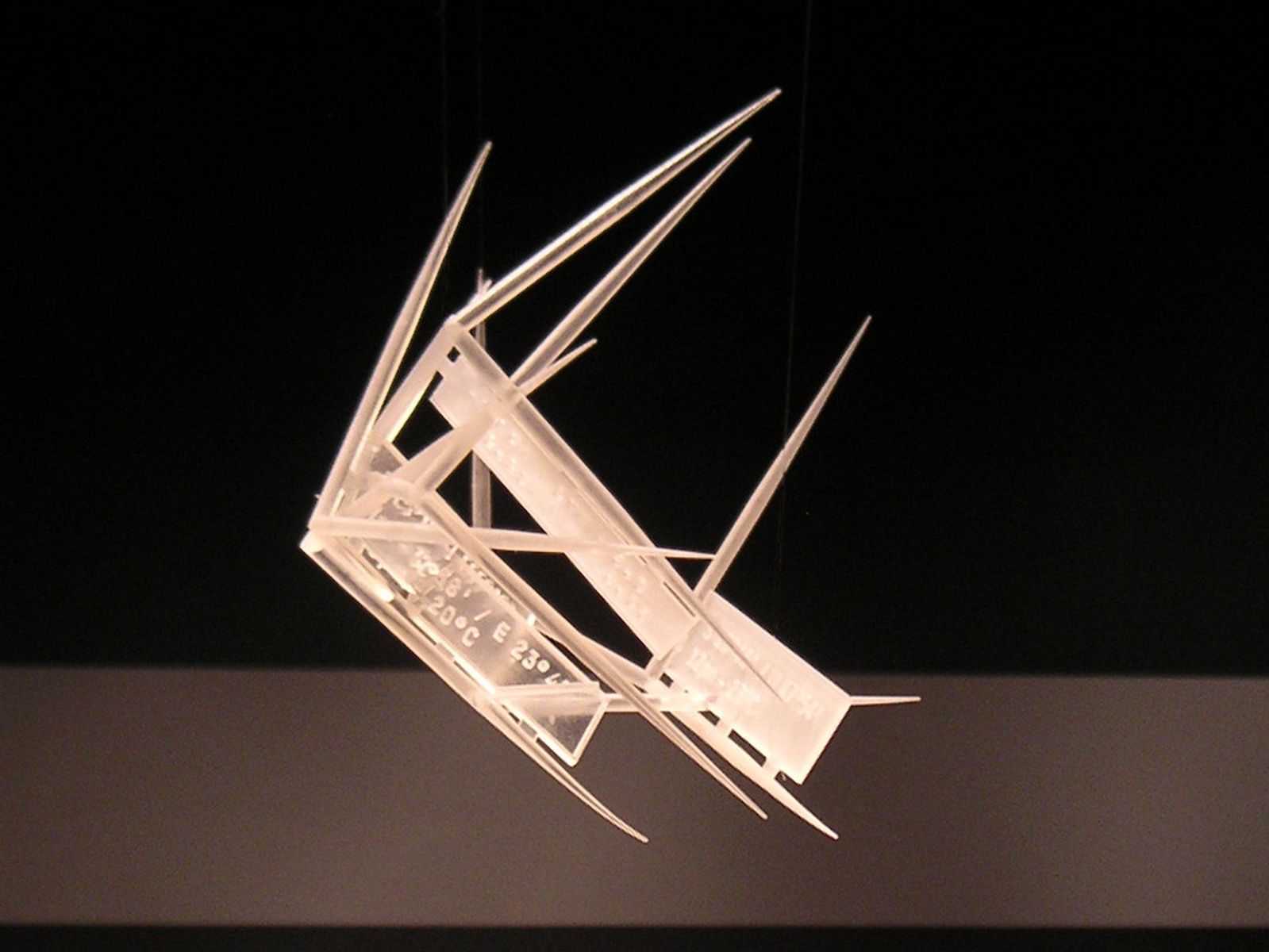
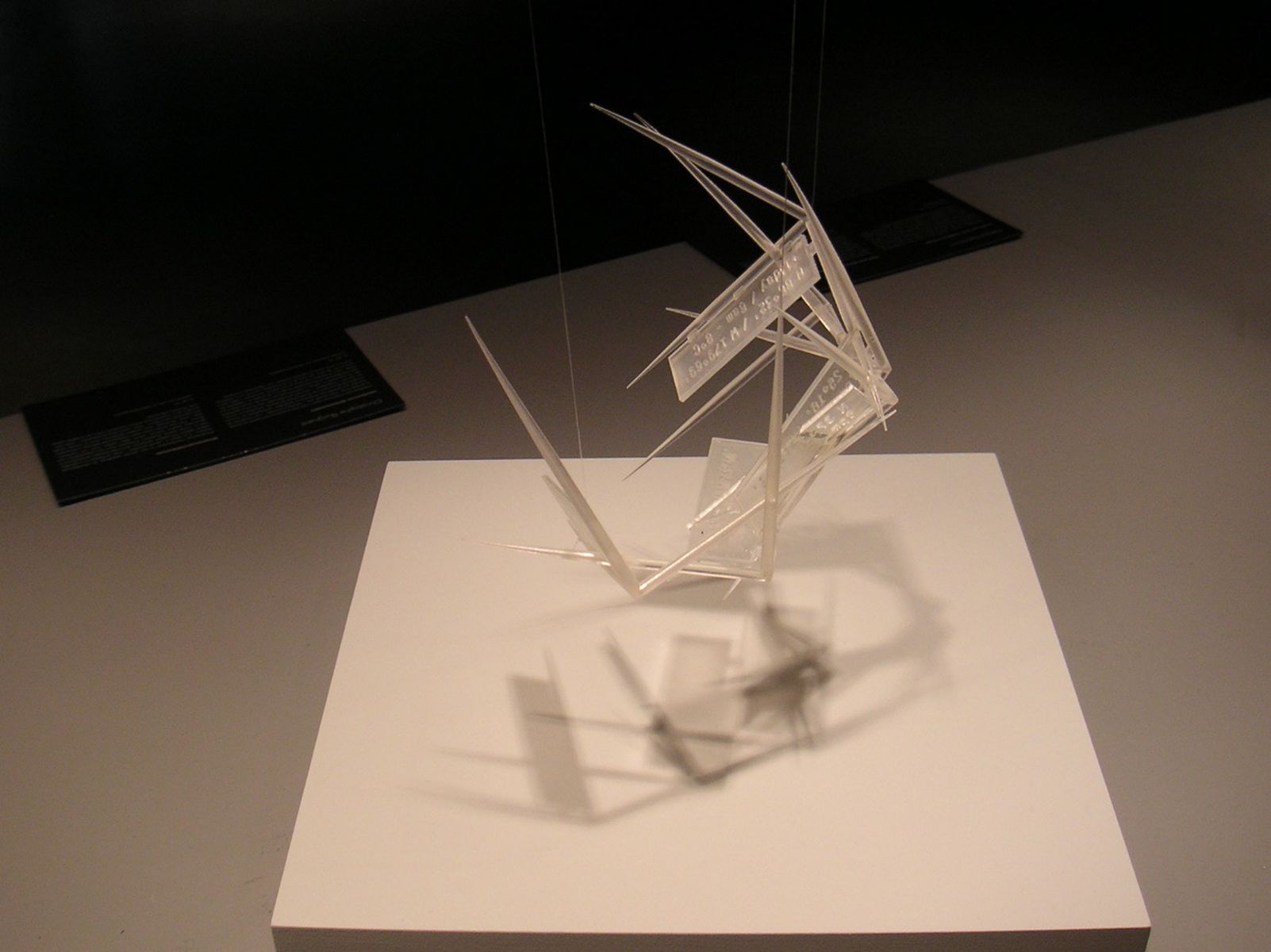
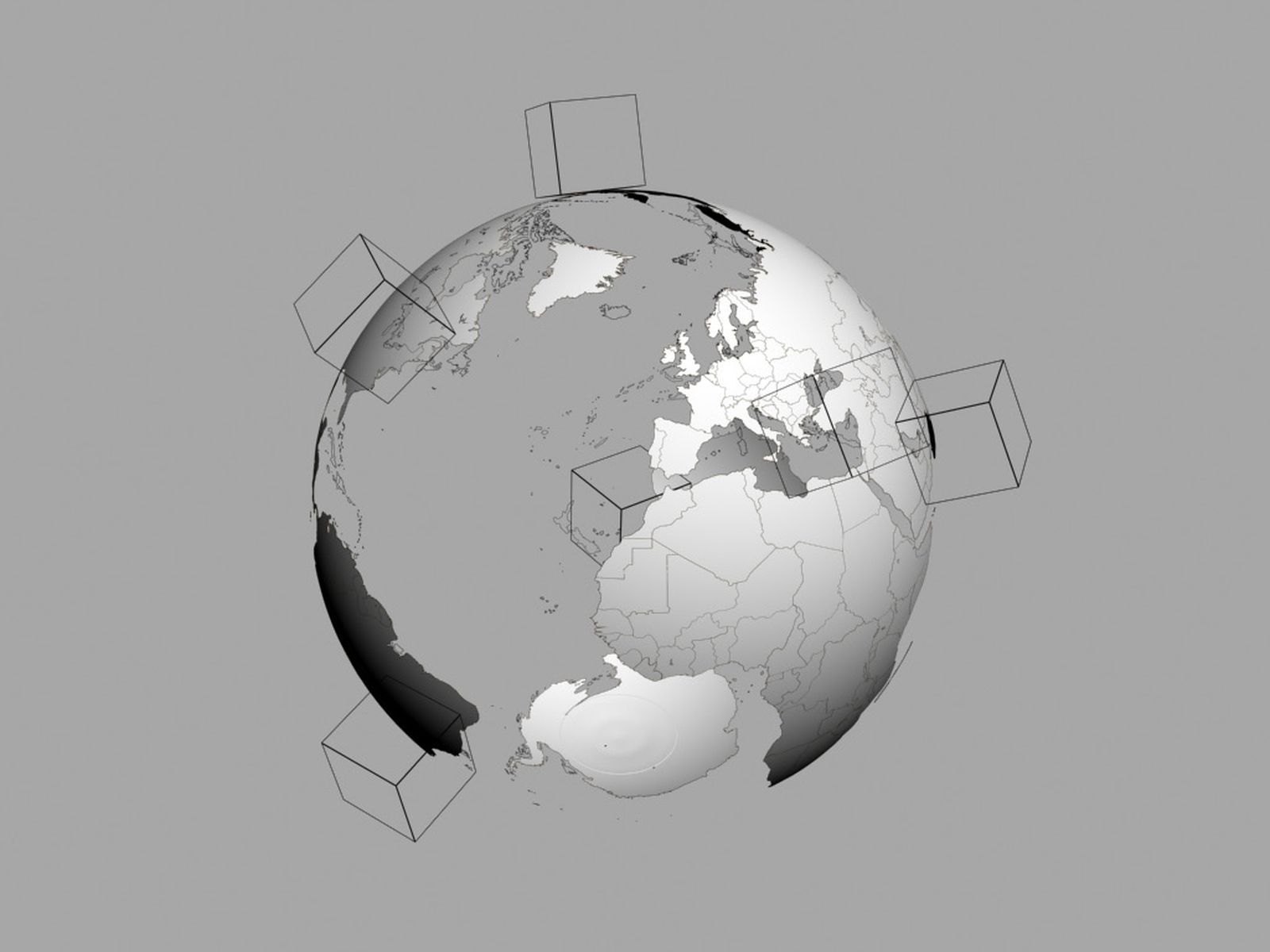
Ex-dimensionnelle (2006)
Ex-dimensionnelle is an article published by FACES, a Swiss architecture magazine. It presents for the first time the concept of « Ex-dimensional architecture » developed by fabric | ch.
Download the article (PDF in French)
